Rick Reichmuth tours the most beautiful National Parks in the U.S.
Rick Reichmuth reports from Acadia National Park in Maine as a part of his summer travel tour 'Where's Rick Reichmuth' on 'Fox & Friends Weekend.'
So many great places — so little time.
Skyrocketing gas prices have consumers looking twice at their fuel budget, yet Americans are determined to hit the road. Fuel costs may actually boost domestic tourism and 4th of July holiday travel plans, experts say.
Car travel "will set a new record despite historically high gas prices with 42 million people hitting the road" this week for Independence Day vacations, according to AAA.
NATIONAL PARKS PREPARE FOR MILLIONS TO VISIT THIS SUMMER
The Deloitte summer travel survey reports that 84% of American travelers will take an overnight trip, 57% will enjoy a road trip and just 15% will travel internationally, largely due to uncertainty over ongoing COVID-19 restrictions.
Given all of this, here’s a look at 50 fabulous spots across the country, with one must-see location in each state. Taken together, these selections reveal our heroic history, industrial achievement and natural beauty that, woven together, tell the story of our American nation.
Alabama – U.S. Space & Rocket Center
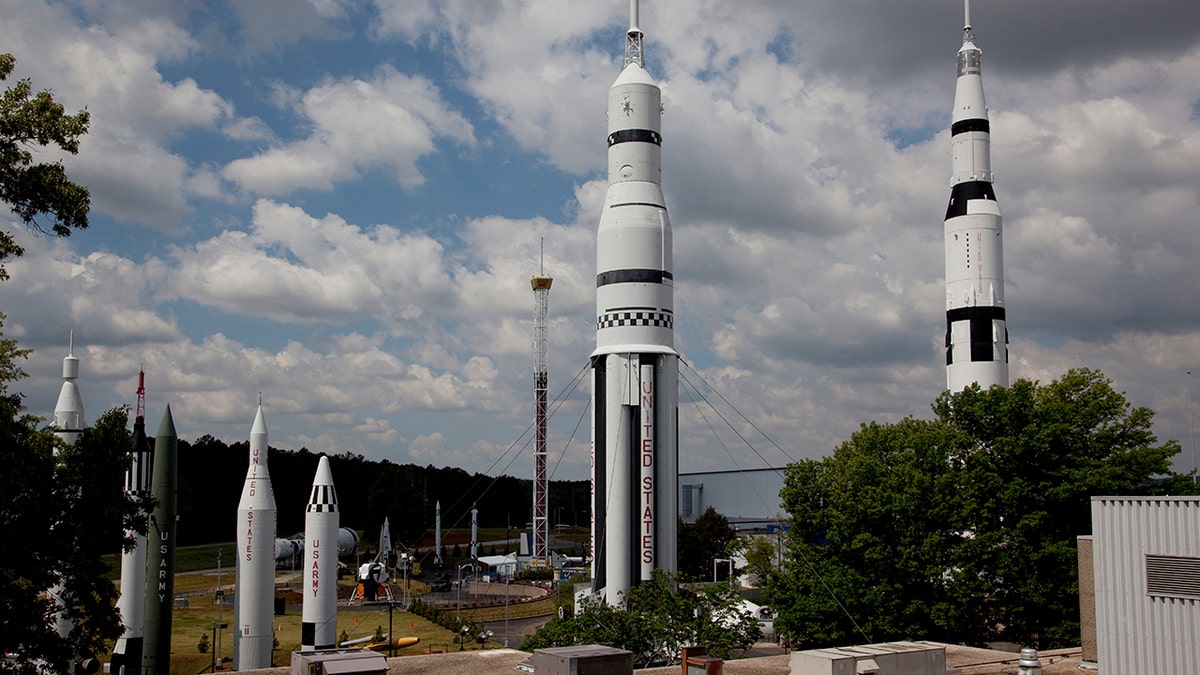
The U.S. Space & Rocket Center in Huntsville, Alabama, 2010. (Carol M. Highsmith/Buyenlarge/Getty Images)
The family-friendly showcase of American exploratory power boasts perhaps the world’s largest display of rocketry and memorabilia from various NASA programs.
Among the highlights at the Huntsville museum: the Apollo 11 virtual reality experience, which puts visitors inside the mission that first put men on the moon; and summertime "astronaut chats" with the nation’s most celebrated space explorers.
Alaska – Glacier Bay National Park & Preserve
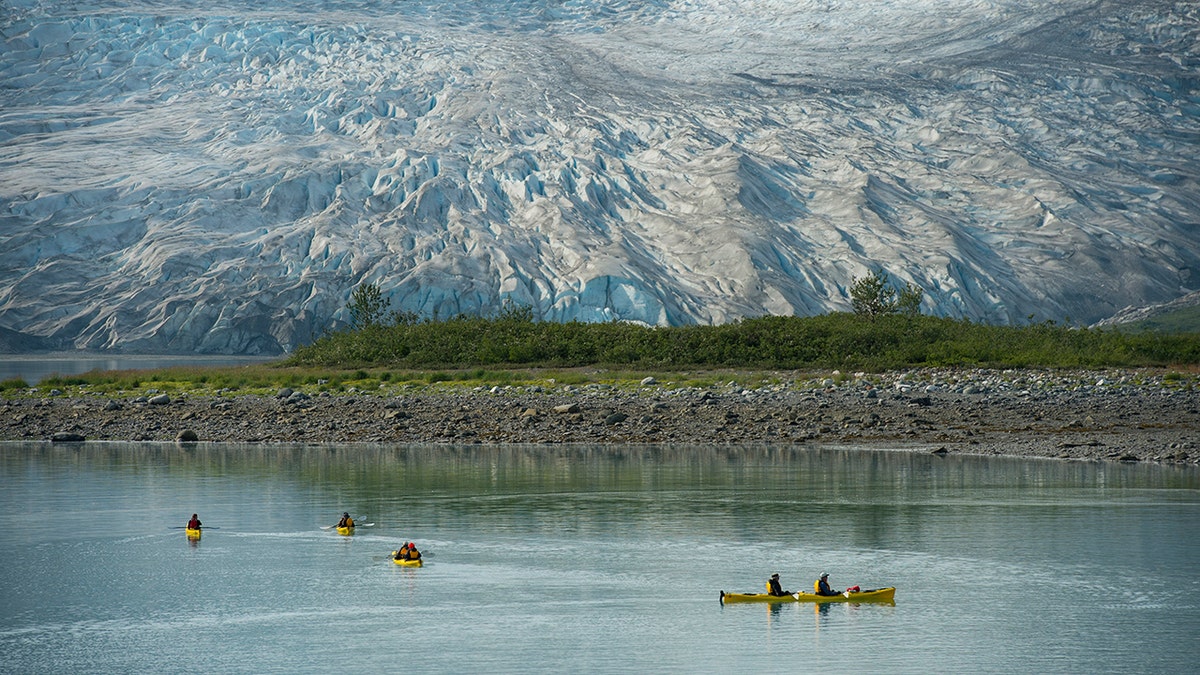
People kayaking with Reid Glacier in background at Glacier Bay National Park in Alaska, in 2012. (Wolfgang Kaehler/LightRocket via Getty Images)
The most accessible of the 17 national parks in the vast expanse of the Last Frontier is no less spectacular than the others. Glacier Bay offers a glimpse into North America during the ice age while offering refuge for a spectacular array of wildlife, including humpback whales and brown bears.
The park is an especially popular destination for seaside adventures aboard everything from kayaks to cruise ships. Glacier Bay is reached through the state capital of Juneau, just a 2½-hour flight from Seattle. At 3.3 million acres, the bay and the surrounding preserve is more than three times the size of Rhode Island.
Arizona – The Grand Canyon
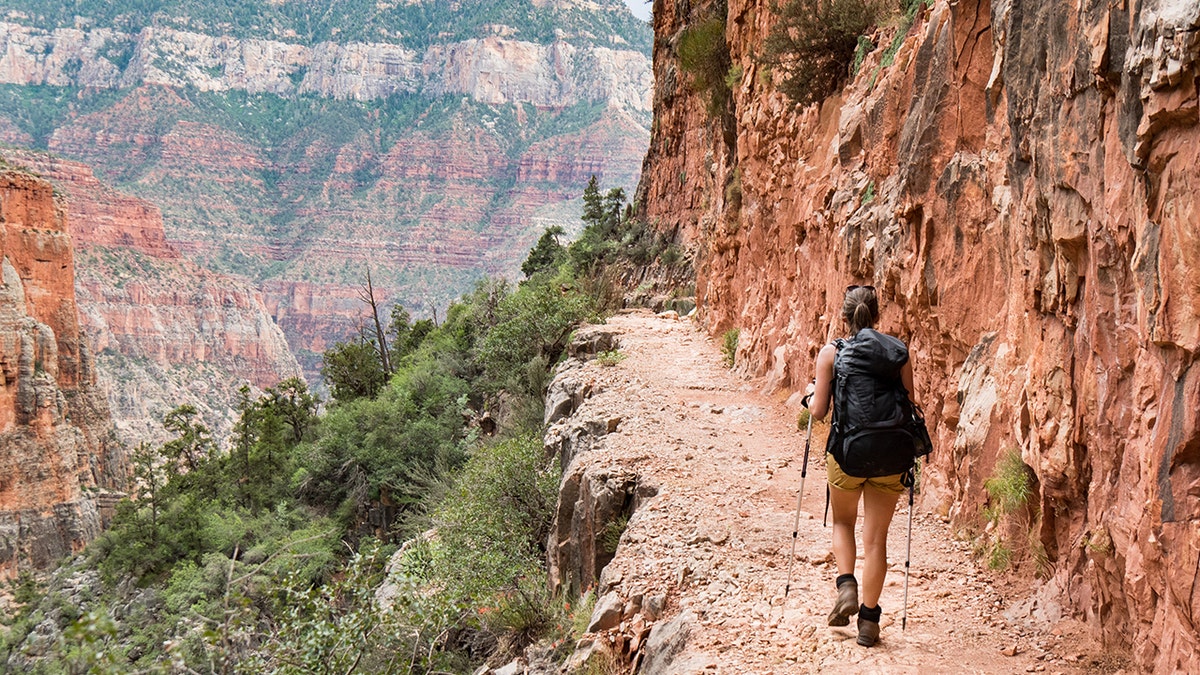
Young hiker with backpack is shown walking in the Grand Canyon in Arizona.
One of the Seven Natural Wonders of the World, alongside the likes of the Great Barrier Reef and Mount Everest, the spectacular gorge stands alone as perhaps the most iconic symbol of the stunning beauty of the American continent. The Grand Canyon encompasses a 277-mile stretch of the Colorado River, about the distance from Boston to Philadelphia. It is up to 18 miles wide and more than 1 mile deep, standing as the world’s greatest example of the erosive power of water.
4TH OF JULY QUIZ! HOW WELL DO YOU KNOW INDEPENDENCE DAY?
"The extent and magnitude of the system of canyons is astounding," wrote U.S. Army explorer Joseph Christmas Ives, the first European American to explore the canyon in 1857-58. The Grand Canyon still astounds visitors today.
Arkansas – Hot Springs National Park
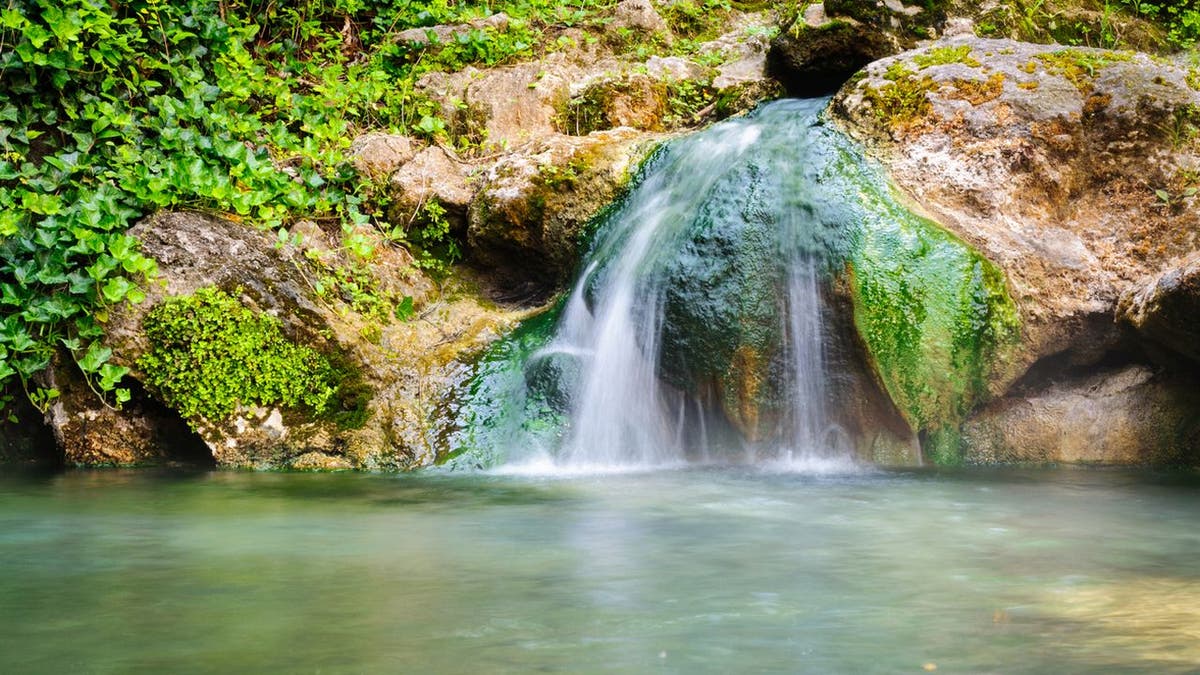
Hot Springs National Park is in central Garland County, Arkansas. It is home to 47 geothermal springs and eight bathhouses. (iStock)
These natural springs were an attraction for the earliest Americans, who harvested the sharp flint rock of the surrounding mountains — now known as Arkansas stone — to create cutting tools long before the arrival of Europeans.
The land was acquired from France as part of the Louisiana Purchase in 1803 and quickly became known for its healing spring waters. Attractions today including hiking, wildlife and natural beauty, plus manmade "Bathhouse Row," featuring nine spas built around its mineral-rich springs.
California – Big Sur
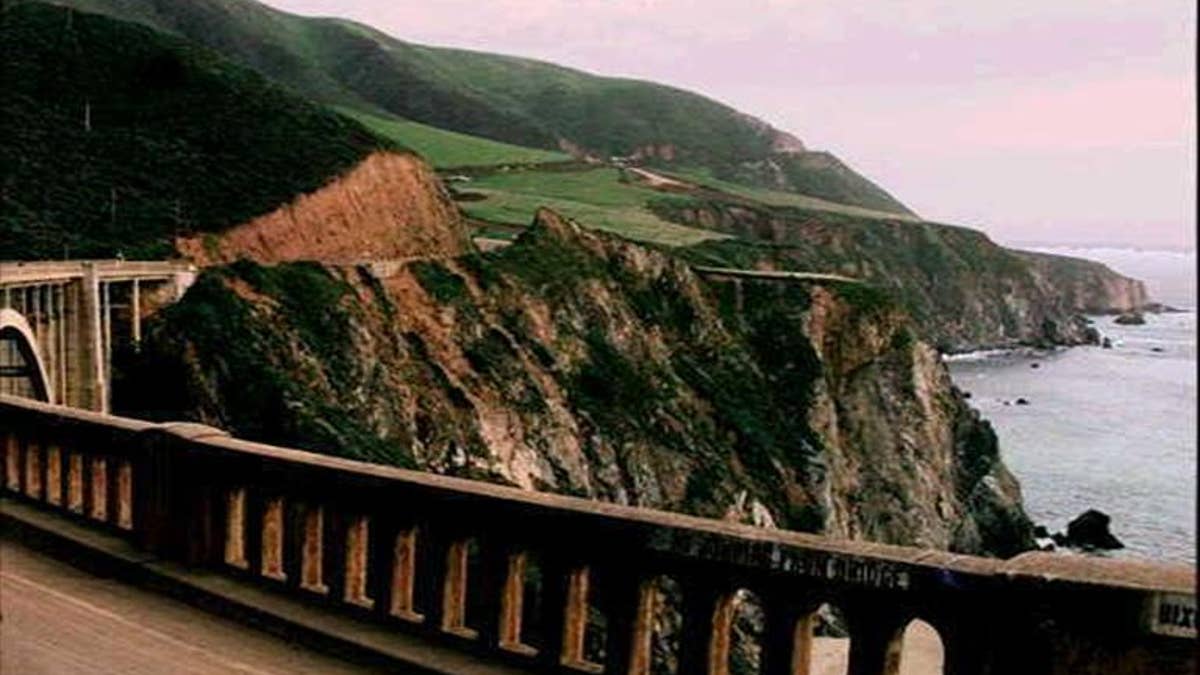
Big Sur boasts some of the most specular and isolated coastal scenery in California along State Route 1, also called Big Sur Coast Highway. (Associated Press)
Big Sur reminds visitors that California, the most populous state in the union, still boasts awe-inspiring natural beauty. State Route 1 hangs precariously between the Santa Lucia Mountains and the Pacific Ocean, offering dramatic and sometimes nerve-wracking vistas of land, sea and towering redwood forests.
Millions drive the 70-mile stretch of road through Big Sur each year, but it remains remarkably isolated, with few permanent residents or roadside amenities. Landslides frequently make Big Sur inaccessible by auto.
Colorado – Rocky Mountain National Park
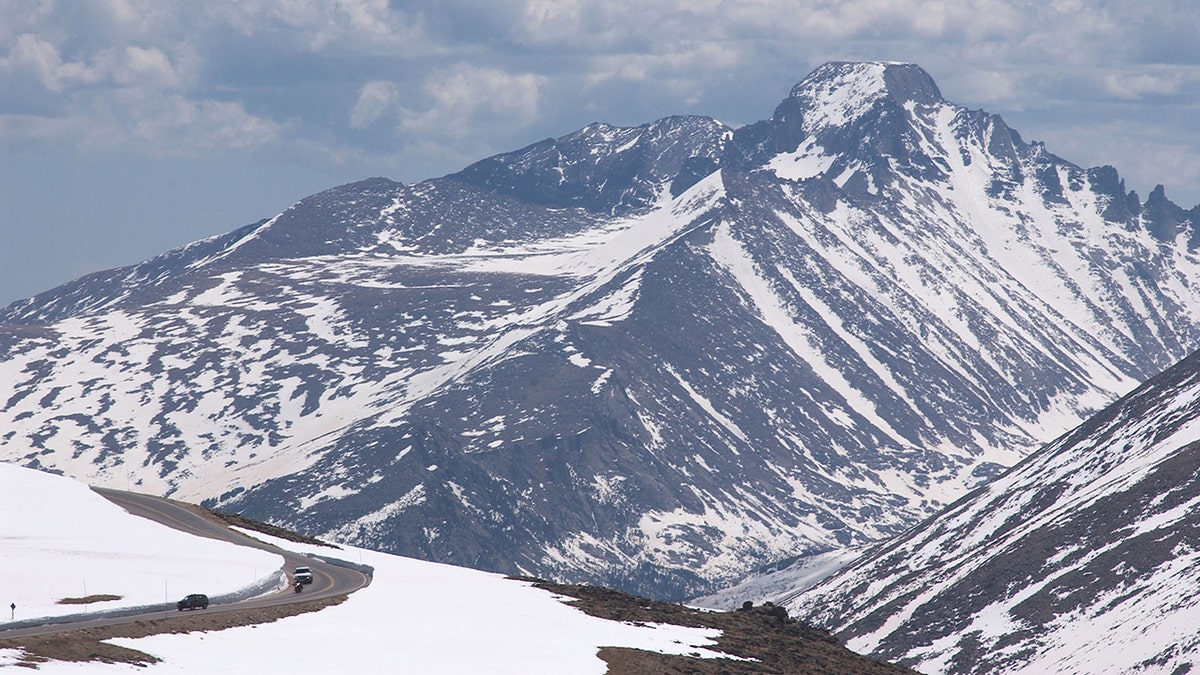
Cars drive down the Trail Ridge Road in Rocky Mountain National Park, Colorado. Rising to an altitude of 12,183 feet above sea level, the road is the highest contiguous paved highway in the country. (Kevin Moloney/Getty Images)
The Rocky Mountains stretch along much of the spine of North America, but are most closely associated with Colorado, where the eastern plains quickly give rise to majestic peaks. Rocky Mountain National Park encapsulates the beauty, diversity and immensity of the range in just 415 square miles.
It includes the Continental Divide, the headwaters of the Colorado River (which carves the Grand Canyon) and the 14,259-foot Longs Peak, the highest mountain in the park — its face so prominent among Colorado residents that it's featured on the Centennial State quarter.
Connecticut – Mystic Seaport

Mystic Seaport recreates oceanfront life in the age of sail. (Mystic Seaport Museum)
America’s largest maritime museum brings the nation’s sailing heritage to life today with its historic New England oceanfront village, exhibits, period arts and crafts and vessels such as the Charles W. Morgan, the world’s last remaining wooden whale ship.
The area is still essential to the nation’s maritime heritage today. The U.S. Navy submarine fleet is headquartered a few miles west in Groton, where visitors can explore the USS Nautilus and Submarine Force Museum.
Delaware – Rehoboth and Delaware Beaches
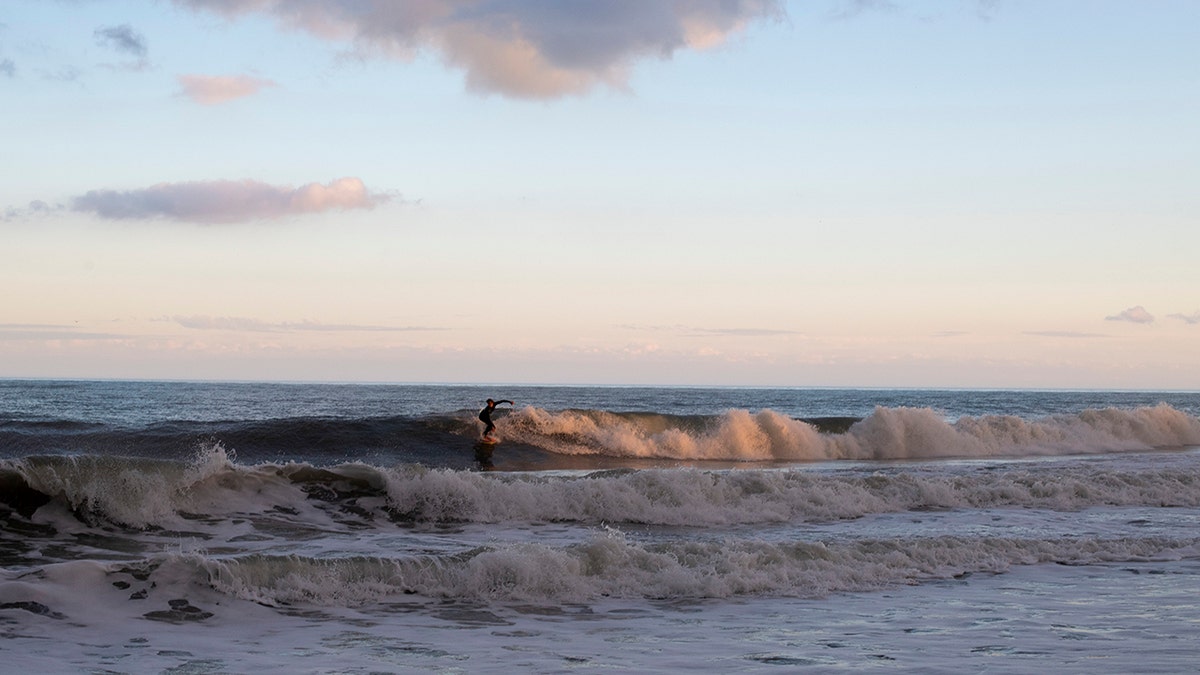
A surfer rides a wave at dusk in Rehoboth Beach, Delaware. (Mark Makela/Getty Images)
One of the nation’s tiniest states packs a big basket of summertime fun into a spectacular 28 miles of Atlantic coastline.
The attractions include Delaware Seashore State Park, a barrier island, which offers waterfront access on both its ocean and bay sides; Funland, which has provided "peace, love and fun since 1962"; and, for adults, Dogfish Head Brewing & Eats, which offers innovative beers from one of the America’s craft-beer pioneers just steps from the waves of Rehoboth Beach.
Florida – The Florida Keys
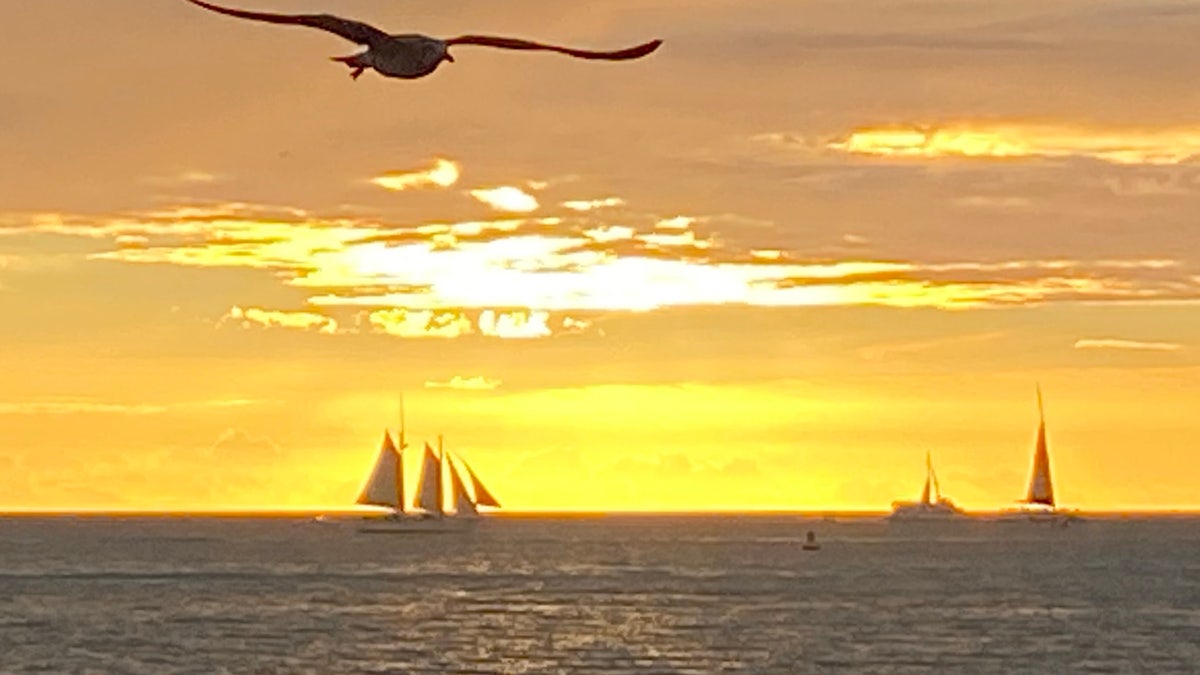
Key West offers plenty of opportunity for sailing, fishing and watching the sun set each evening from Mallory Square at the end of the Florida Keys. (Kerry J. Byrne/Fox News Digital)
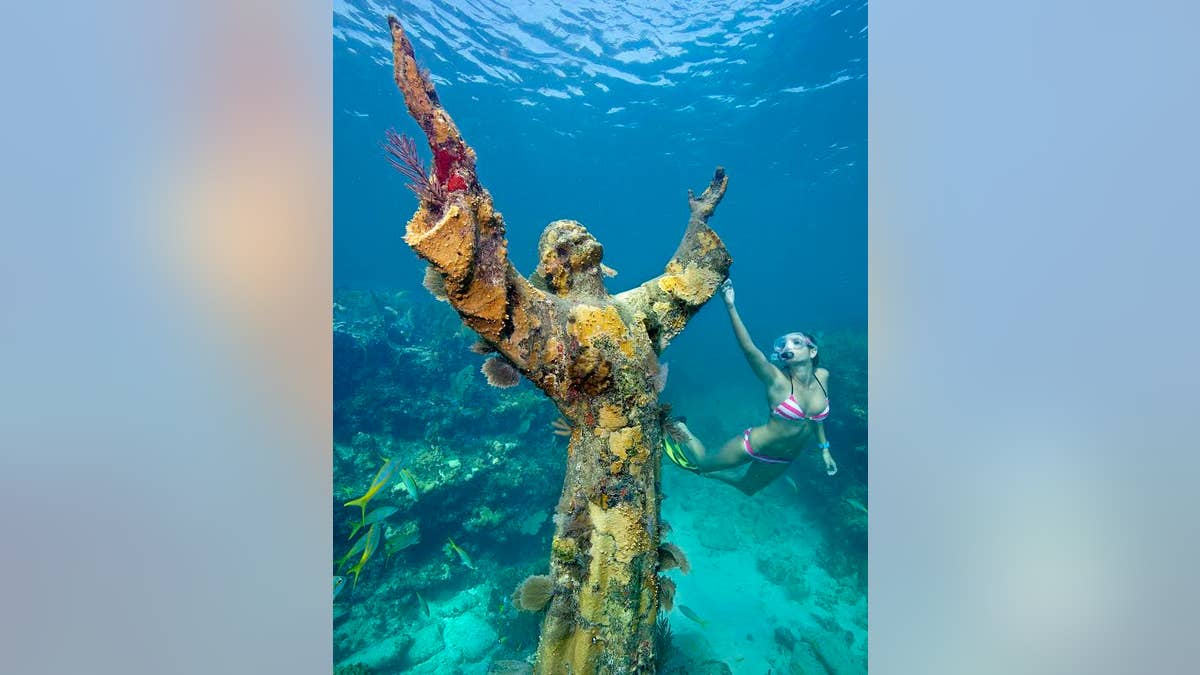
Katherine Wieland snorkels by the "Christ of the Abyss" statue, an underwater icon for John Pennekamp Coral Reef State park, off Key Largo, Fla. Named for a former Miami newspaper editor, Pennekamp is the nation's first underwater preserve. (Stephen Frink/ Florida Keys News Bureau)
This spectacular archipelago of coral islands begins just south of Miami and extends more than 100 miles west into the Gulf of Mexico. The Florida Keys offer one of the most stunning drives in the nation, with the feeling of skimming across the ocean as autos leap from one island to the next.
Highlights include, from east to west, John Pennekamp Coral Reef State Park, the nation’s first underwater preserve; Islamorada, dubbed the "sport fishing capital of the world"; and, at the end, Key West, an adult paradise of boozy margarita bars, seafood shacks and leisure nightlife where the most popular activity is watching the sun set gloriously each night from Mallory Square.
Georgia – Savannah Historic District

Savannah is adorned with dozens of beautiful squares. (Visit Savannah)
The colonial south lives today amid the verdant squares of Savannah, a nearly 300-year-old city that enjoyed a rebirth following its haunting, captivating portrayal in the 1994 bestselling book "Midnight in the Garden of Good and Evil."
Visitors love Savannah for its charming thoroughfares, including the iconic cobblestones of River Street; delicious restaurants highlighting the best of southern fare, such as Paula Deen’s flagship eatery The Lady and Sons; its historic squares, such as Chippewa Square, featured in "Forrest Gump"; and one of the nation’s biggest and best St. Patrick’s Day bashes.
Hawaii – Pearl Harbor
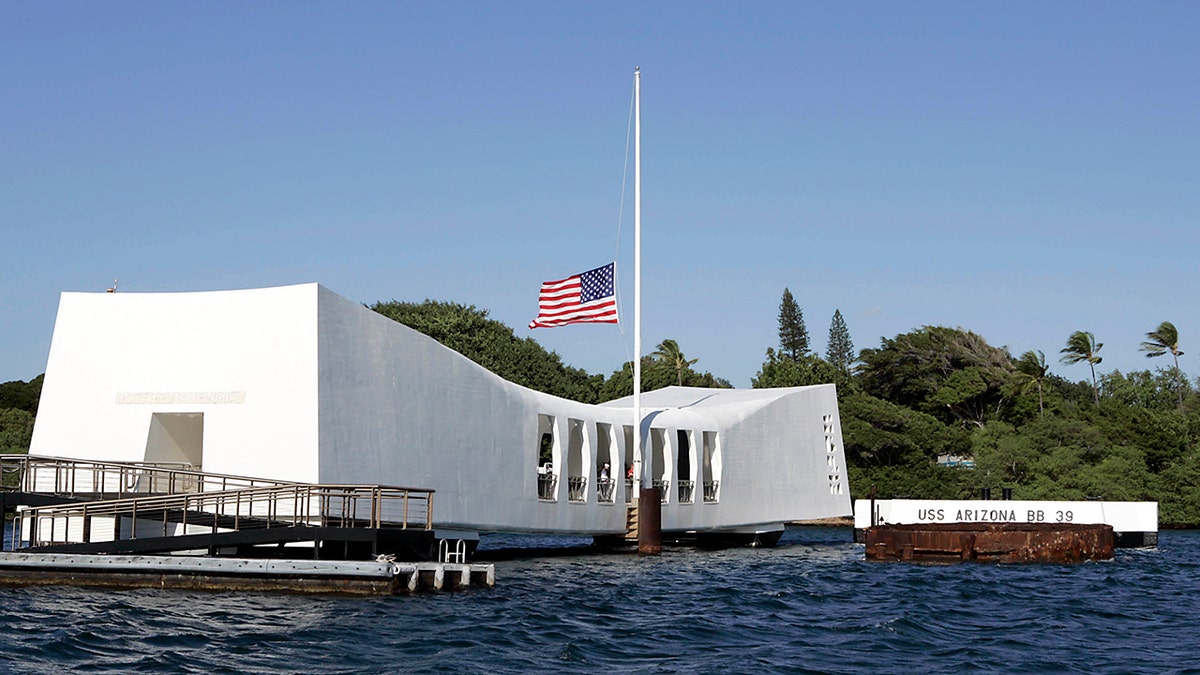
A U.S. flag flies at half-mast aboard the USS Arizona Memorial during the ceremony honoring the 64th anniversary of the surprise attack on Pearl Harbor, on Dec. 7, 2005 at Pearl Harbor, Hawaii. (Marco Garcia/Getty Images)
World War II history lives in infamy in the heart of Honolulu, where Pearl Harbor remains a powerful testament to American tragedy and resolve. Visits are highlighted by the haunting memorial to the USS Arizona, which exploded catastrophically on Dec. 7, 1941 and which serves as a tomb for 1,102 sailors killed in the shocking Sunday morning attack.
HAWAII'S HIDDEN TREASURES INCLUDE THESE HISTORIC WAR MONUMENTS IN OAHU
Oil still leaks from the ship today, as if the Arizona is still shedding tears, observers have noted. Other attractions include Hickam Field, where U.S. aircraft were destroyed on the ground before they had a chance to fight back, and the USS Missouri, the mighty battleship aboard which the Japanese signed the documents of surrender ending World War II less than four years after the Pearl Harbor attack.
Idaho – Craters of the Moon National Monument

North America, USA, Idaho, Arco, Craters of the Moon National Monument, Inferno Cone. (Bernard Friel/UCG/Universal Images Group via Getty Images)
The haunting landscape of sprawling volcanic lava fields is so desolate that NASA sent astronauts destined for the moon to Idaho to train. The administration has continued to use Craters of the Moon for research, even though the manned lunar mission ended 50 years ago.
The lava flows that formed Craters of the Moon are fairly recent in geologic time, the most recent eruption just 2,000 years ago, expert believe. The dormant volcano below is expected to erupt again in the next millennium. The spectacular Cinder Cone Trail makes the park a premier attraction for both professional and weekend volcanologists.
Illinois – Abraham Lincoln Presidential Library and Museum
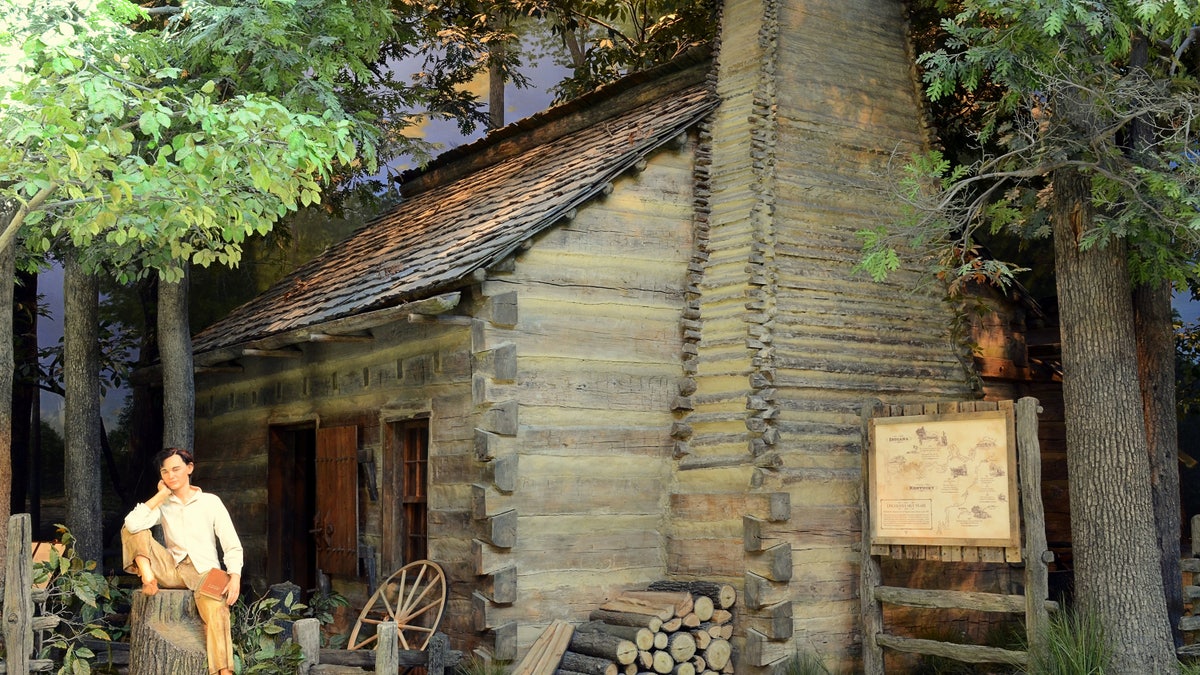
The Great Emancipator was famously born in a Kentucky pioneer log cabin, a replica of which is on display at the Abraham Lincoln Presidential Library and Museum in Springfield, Ill. (Abraham Lincoln Presidential Library and Museum)
Many citizens and scholars regard the Great Emancipator as the greatest of all presidents. He saw the nation through its greatest and deadliest division while liberating 4 million Americans from the tragedy of human bondage — losing his own life to assassination before his work was completed.
His Springfield library and museum contain a powerful treasure chest of Lincolnian artifacts and exhibits, including his handwritten Gettysburg Address, a signed Emancipation Proclamation and a life-size replica of his log cabin Kentucky birthplace.
Indiana – Indianapolis Motor Speedway

Marcus Ericsson of Sweden, driver of the #8 Team Chip Ganassi Racing, poses during the 106th Indianapolis 500 champion's portraits at Indianapolis Motor Speedway on May 30, 2022 in Indianapolis, Indiana. (Justin Casterline/Getty Images)
America’s love affair with the automobile is celebrated nowhere better than at the Racing Capital of the World. The Indianapolis 500 has been one of the world’s signature motorsport events for more than a century, dubbed "the greatest spectacle in racing."
The museum at the 2.5-mile track known as The Brickyard will fuel the motor of any racing enthusiast. It highlights great moments in racing history and includes vehicles from NASCAR, Formula One and other racing disciplines. The museum also houses the Indianapolis Motor Speedway Hall of Fame, celebrating racing icons such as Dale Earnhardt, A.J. Foyt and Emerson Fittipaldi, as well as such auto industry pioneers as Henry Ford, Harvey Firestone and Gaston and Louis Chevrolet.
Iowa – National Mississippi River Museum & Aquarium

A man is shown fishing on the Mississippi River. Iowa's National Rivers Hall of Fame celebrates the legacy of the great American river. (iStock)
The Dubuque, Iowa, museum is devoted to preserving the cultural heritage of the Mississippi and other American rivers, along with protecting and promoting its array of aquatic life. The aquarium boasts catfish, sturgeon, rays and river otters, among many other animals. Its exhibits explore the various habitats of the Mississippi, from backwater marsh to bayous, as well as the industry and craftsmanship that sprung up around river life.
Its National Rivers Hall of Fame, meanwhile, celebrates the legacy and the Americans who harnessed, popularized and promoted the great American river. Among its members: author Mark Twain, riverboat jazz icon Louis Armstrong and explorers Meriwether Lewis and William Clark.
Kansas – Dodge City

The Iron Cowboy statue outside, East and West, Dodge City, Kansas. USA. (Photo by: Universal Images Group via Getty Images)
The Wild West lives on in the home of legendary figures such as Wyatt Earp, Doc Holliday and Bat Masterson, a community once dubbed the Wickedest Little City in America. Dodge City entered American popular culture with the success of drama "Gunsmoke," which aired on national radio and/or TV from 1952 to 1975, one of the most successful productions in broadcast history. The city boasts numerous attractions tied to its storied past. The Boot Hill Museum offers exhibits dedicated to preserving the history of the Old West.
The Dodge City Trail of Fame celebrates the community's most legendary figures, those who played them on the screen — such as Errol Flynn and Burt Lancaster — and even famous native sons such as actor Dennis Hopper. The Santa Fe Trail Tracks, also known as the Dodge City Ruts, shows the paths worn into the landscape by those who got out of Dodge and pioneered further west.
Kentucky – Cumberland Gap National Historic Park
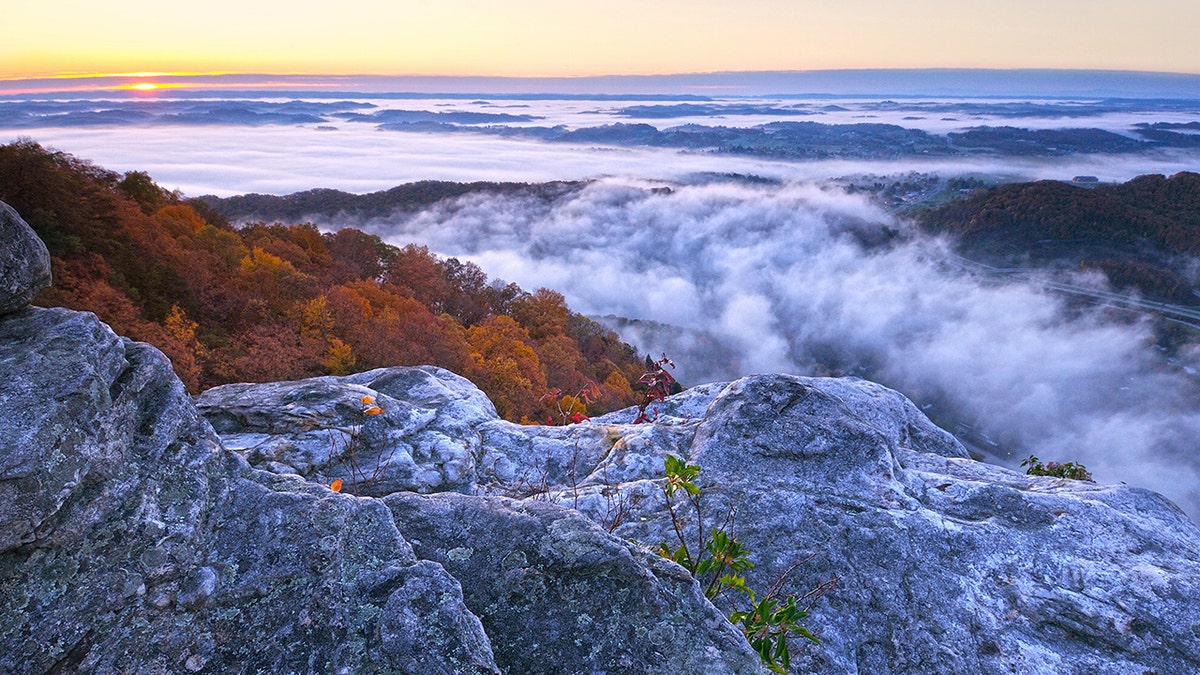
Sunrise at Pinnacle Overlook amid the fog in Cumberland Gap National Historic Park, which lies along Kentucky, Tennessee and Virginia. (Dukas/Universal Images Group via Getty Images)
Cumberland Gap offers a unique combination of natural beauty and transformational American history. The path through the gap was beaten over the centuries by herd of bison, and first explored among Europeans by English settler Abraham Wood in the 1670s. It is most closely associated in American lore with pioneer Daniel Boone, who paved the way through the gap now known as Wilderness Road in the 1770s, offering the young nation’s first major land gateway to the west.
The park today features hiking trails, scenic vistas, the Gap Cave dubbed a "majestic underground cathedral" and attractions such as the Hensley Settlement, a living history museum amid a log cabin pioneer village. While the visitors center is in Middlesboro, Kentucky, the park also sprawls into Virginia and Tennessee.
Louisiana – Jean Lafitte National Historical Park and Preserve
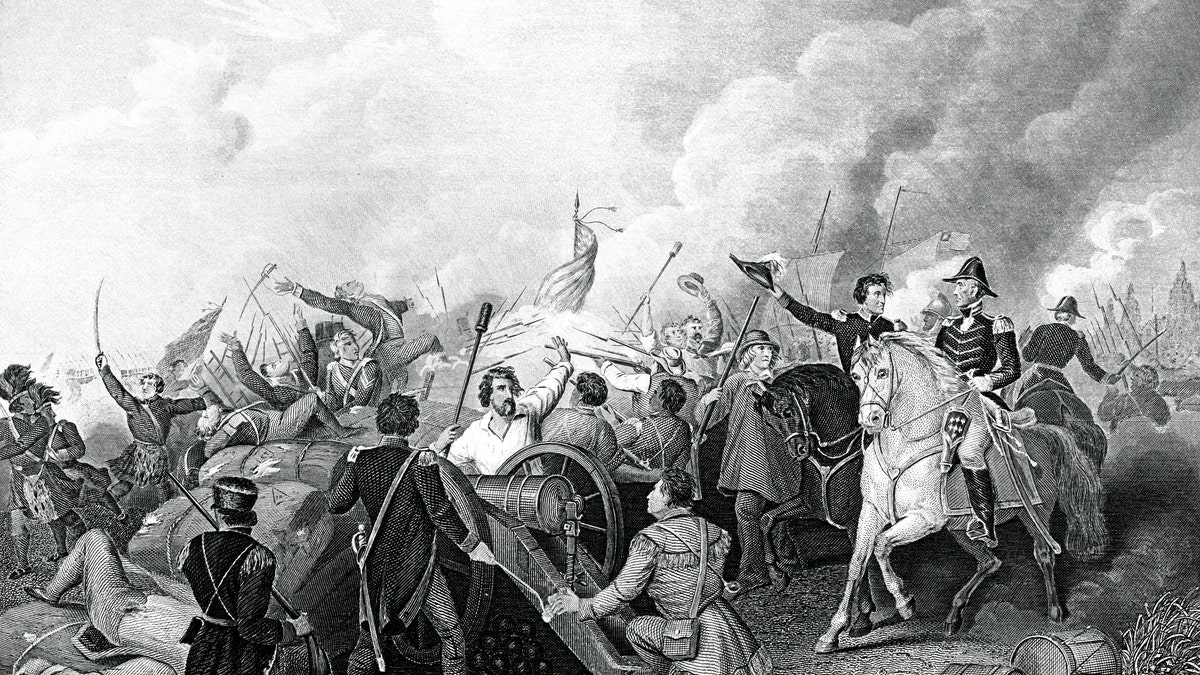
An illustration of the Battle of New Orleans. Fought from Dec. 14, 1814 to Jan. 18, 1815, the battle was the last major engagement of the War of 1812. (traveler1116/iStock)
A sprawling, exotic-to-most landscape celebrates one of the planet's most unique ecologies and cultures, along with dramatic American history. The park is located the heart of bayou country near the mouth of the Mississippi River. Highlights include Chalmette Battlefield, where Andrew Jackson led a highly diverse army of American peoples to victory over the British at the end of the War of 1812; and the Chalmette National Cemetery, housing the remains of veterans of that battle, the Civil War and other conflicts.
Barataria Preserve, a haunting 26,000-acre wilderness of hardwood forests and bayous, offers a chance to observe alligators and other swamp creatures in their natural habitat.
Maine – Acadia National Park
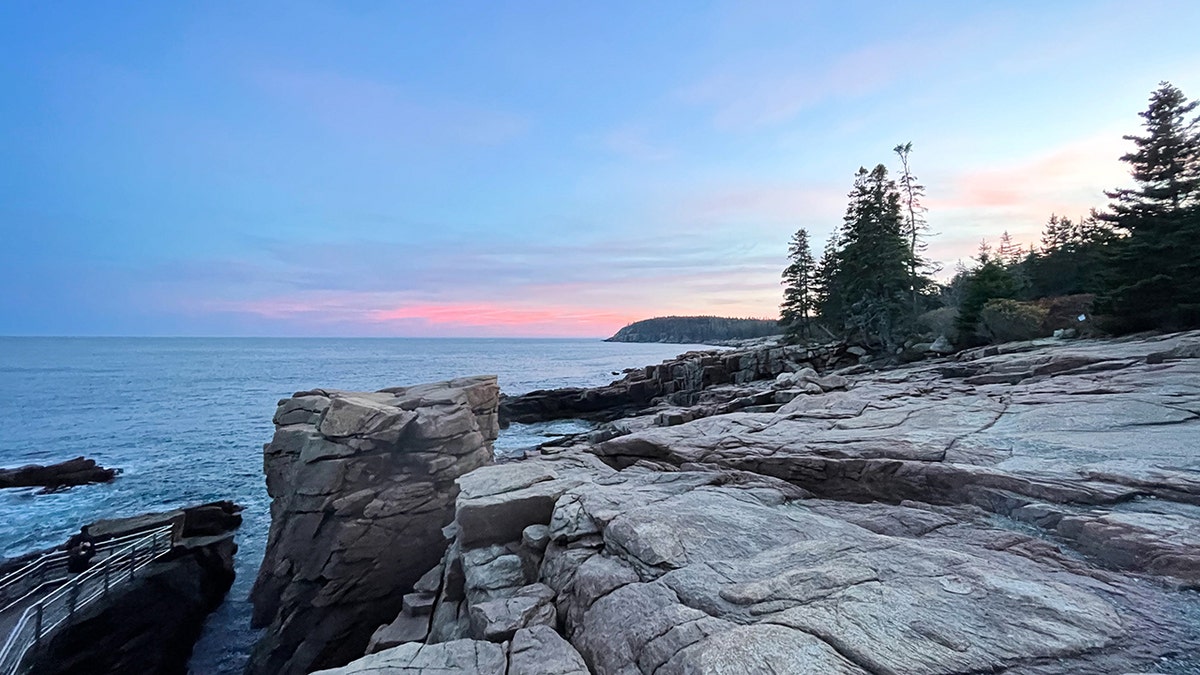
Thunder Hole at Acadia National Park in Maine — the Pine Tree State. (Karla Ann Cote/NurPhoto via Getty Images)
The majestic park offers the most spectacular example of New England's famously rugged rocky coast, with the Atlantic Ocean giving way to a granite shoreline, then sprawling pinewood forests and stunning terrain highlighted by Cadillac Mountain, the highest peak on the eastern seaboard.
Visitors also experience Maine’s unique Downeast culture — complete with its own curious accent — and a postcard landscape of lobster boats anchored in snug coves, quaint coastal villages of artists and boat builders, with havens for rock climbers, snowmobilers and ice fishermen.
Maryland – Annapolis

A skyline in Annapolis, Maryland, with a view of the State House. (iStock)
There’s perhaps no better place to celebrate the nation’s ties to the seas than in the Maryland capital — also briefly the nation’s capital in 1783, when the Treaty of Paris was signed, ending the American Revolution.
Annapolis is home to the U.S. Naval Academy and known as the "Sailing Capital of the United States." Its colonial-era downtown is a great place to explore and enjoy Maryland’s signature oysters and crabs at local hotspots such as Middleton’s or Cantler’s. Annapolis serves as the center of the state’s delicious Crab & Oyster Trail, highlighting the best in Chesapeake Bay delicacies.
Massachusetts – Minute Man National Historical Park

The few Minutemen who stood their ground against the overwhelming Redcoats on Lexington Common are honored today at Minute Man National Historical Park west of Boston. (Kerry J. Byrne/Fox News Digital)
This serpentine park meandering through woodlands and town squares west of Boston tells the heroic tale of April 19, 1775, when 80 armed American civilians stood their ground on Lexington Common as 700 British troops, agents of the most powerful king in the world, pressed down upon them.
The Redcoats were looking to capture local munitions and rebel leaders Sam Adams and John Hancock. "Throw down ye arms," a British officer commanded. The outnumbered Americans did not surrender their arms. The "shot heard ‘round the world" rang out — and the American Revolution had begun.
"What a Glorious Morning for America," the street signs of Lexington still read today.
The Lexington minutemen were quickly overrun, eight of them killed; but they had bought time as the call to arms spread across the countryside. The growing American force at Concord a few miles west greeted the British and turned them back. Soon, thousands of colonists chased the Redcoats all the way back to Boston, decimating their ranks along the way. "What a Glorious Morning for America," the street signs of Lexington still read today.
Michigan – Henry Ford Museum of American Innovation
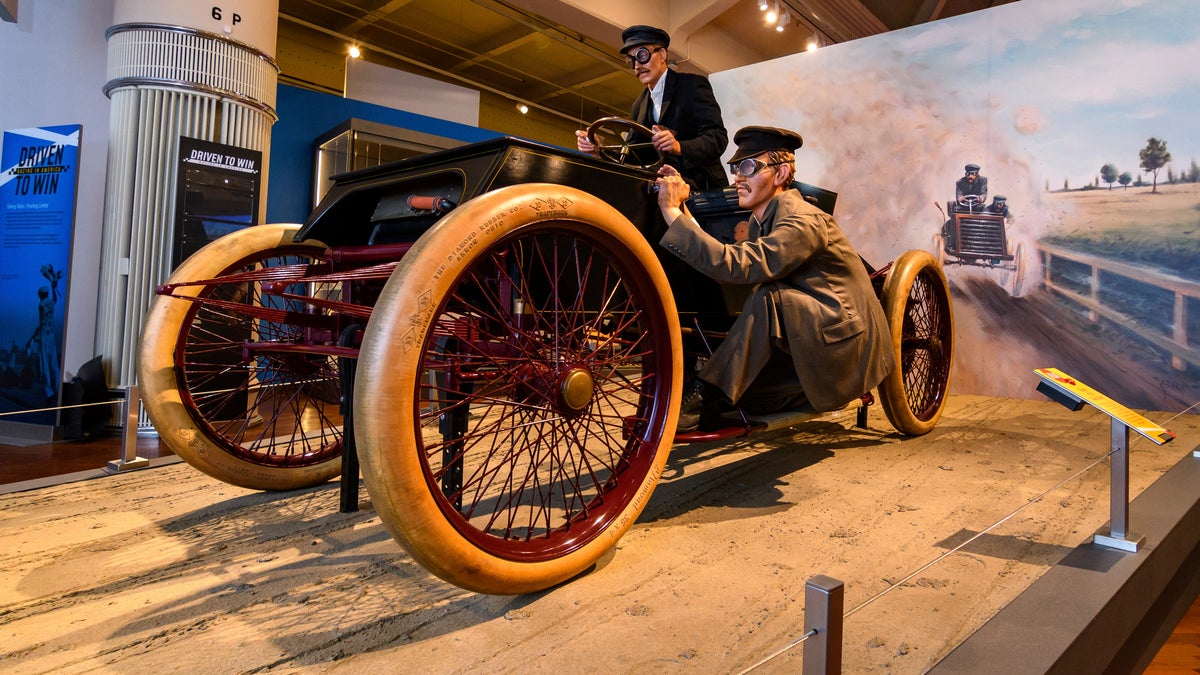
This image shows the "Sweepstakes" car, part of a Driven To Win exhibit at The Henry Ford Museum in Dearborn, Mich. (Wes Duenkel/The Henry Ford via AP)
Few did more to shape modern America than Henry Ford. The Museum of American Innovation is a fitting tribute to that impact — highlighted by a heavy dose of our national history. The Henry Ford, as it's often known, is a collection of several sites sprawling across 250 acres.
The flagship museum includes jaw-dropping Americana memorability such as the Rosa Parks bus, George Washington's camp bed, and the limousine in which President Kennedy was assassinated, among many other exhibits and events.
Minnesota – Itasca State Park
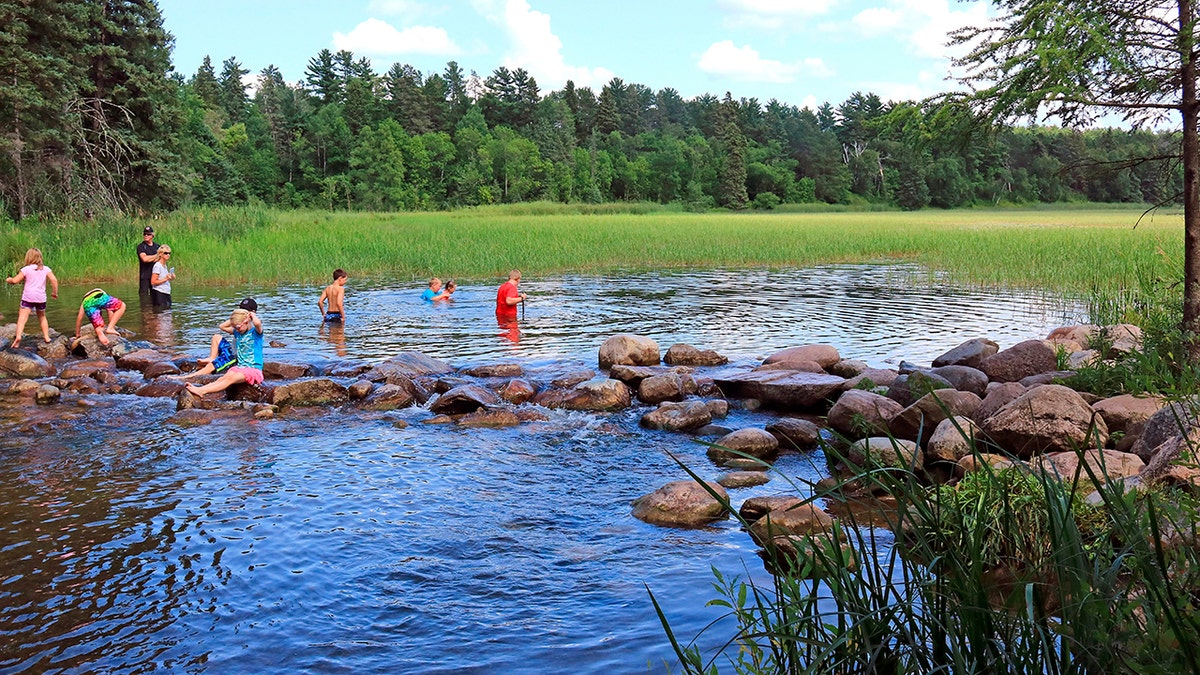
Children play in the outlet of Lake Itasca Minnesota. (Education Images/Universal Images Group via Getty Images)
The Land of 10,000 Lakes (11,842, to be exact) also boasts the headwaters of the nation's most celebrated waterway. The Mississippi River begins its spectacular journey through the heart of the American continent at Minnesota's Lake Itasca. The river had been known by European and Americans since the arrival of the earliest exploders, but it was only in 1832 that New York pioneer Henry Rowe Schoolcraft, led by native Anishinaabe guide Ozawindib, found the headwaters of the Mighty Mississippi in the deep wilderness of northern Minnesota.
Itasca State Park today offers hiking, biking, swimming, camping, boat tours and the Headwaters Monument. The popular selfie spot proclaims, "Here, 1,475 feet above the ocean, the mighty Mississippi begins to flow on its winding way 2,552 miles to the Gulf of Mexico."
Mississippi – Vicksburg National Military Park
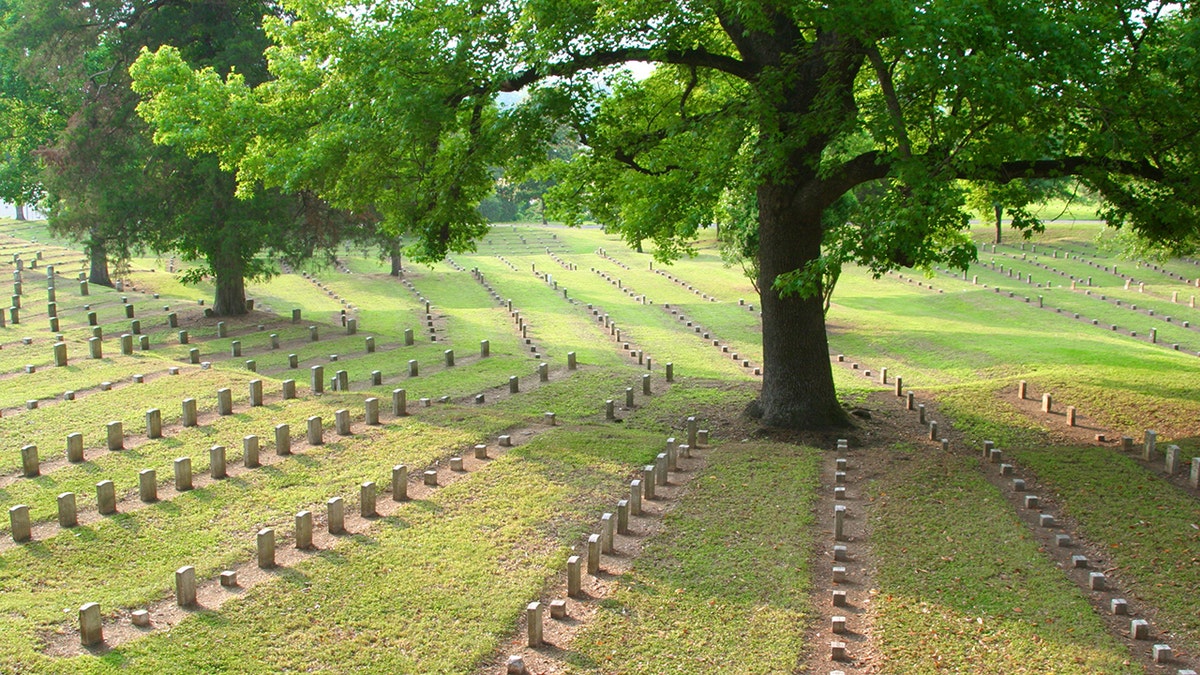
In Mississippi: Vicksburg National Military Park and Vicksburg National Cemetery. (Jeff Greenberg/Universal Images Group via Getty Images)
The Civil War Siege of Vicksburg ended after six weeks with a stunning victory by Ulysses S. Grant’s Union troops on July 4, 1863, the day after federal forces repelled Pickett’s Charge to claim victory 1,000 miles to the northeast at Gettysburg, Penn. Vicksburg's haunting park today is highlighted by some 1,400 memorial and markers, representing all 32 states that sent men to fight there, and two major cemeteries of both Confederate and Union war dead.
FOX NATION TO DEBUT NEW AMERICAN HISTORY SERIES HOSTED BY KELSEY GRAMMER
The national park’s attractions also include the USS Cairo Gunboat and Museum, featuring the ironclad Union vessel that patrolled the Mississippi River. Success at Vicksburg helped catapult Grant to the head of the Union army the following year, and eventually the presidency. But his ruthless siege nearly starved the people of Vicksburg. The city would not celebrate the 4th of July again until 1947, during a visit and speech by World War II hero Gen. Dwight Eisenhower.
Missouri – Gateway Arch
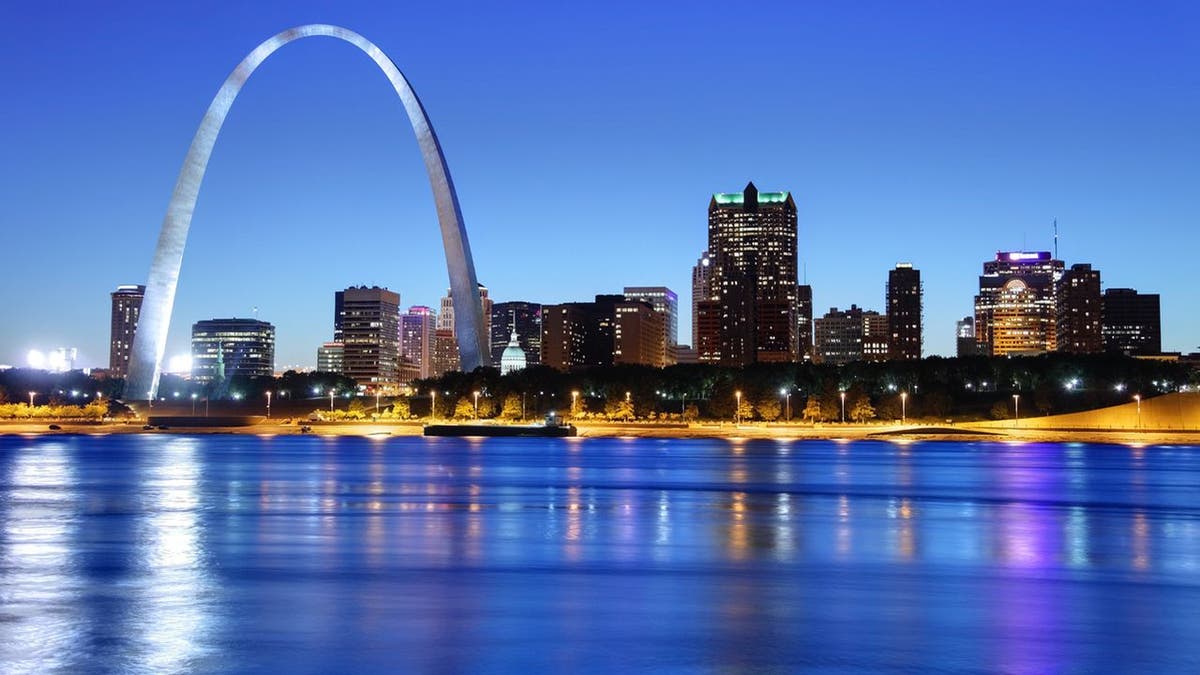
The city of St. Louis, Missouri, as seen from across the river. The Gateway Arch dominates the left upper section of the photo.
The world’s tallest arch (630 feet) on the western bank of the Mississippi River pays homage to St. Louis as the Gateway to the West. It's situated on the site of the original St. Louis settlement of 1763, south of the confluence of the Missouri and Mississippi Rivers.
Visitors ride in small capsules to the top of the gleaming stainless-steel monument, where they find grand views of both the river and the city below, and learn more about America’s westward expansion at ground level at the Museum of the Gateway Arch. The arch can also be admired from riverboat cruises, and provides a great place to kick off exploration of St. Louis, including Busch Stadium a short walk away.
Montana – Museum of the Rockies
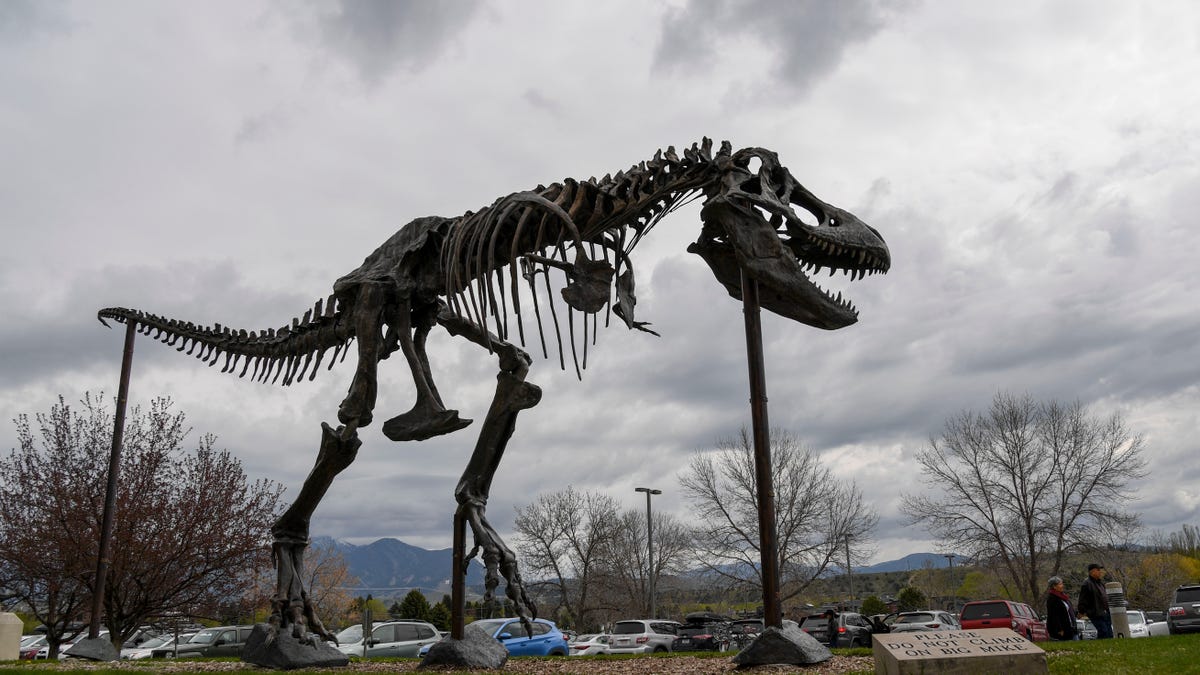
A replica of the 66-million-year-old creature dubbed the "Nation's T. Rex" found by ranchers Kathy and Tom Wankel is the featured dinosaur outside the Museum of the Rockies in Bozeman, Montana. (Jonathan Newt, The Washington Post via Getty Images)
Long before humans inhabited North America, the land was ruled by dinosaurs, notably the fearsome Tyrannosaurus Rex. Skeletons of the giant "king of the lizard tyrants" were first found through the American West.
The Museum of the Rockies in Bozeman offers one of the world’s greatest collections of North American dinosaur fossils — not just the T-Rex but also the horned triceratops and a nearly complete skeleton of an allosaurus, a predecessor of the lizard king. The museum also includes exhibits dedicated to native peoples of the area and to the homesteaders who settled Montana in the 19th century.
Nebraska – Scotts Bluff National Monument
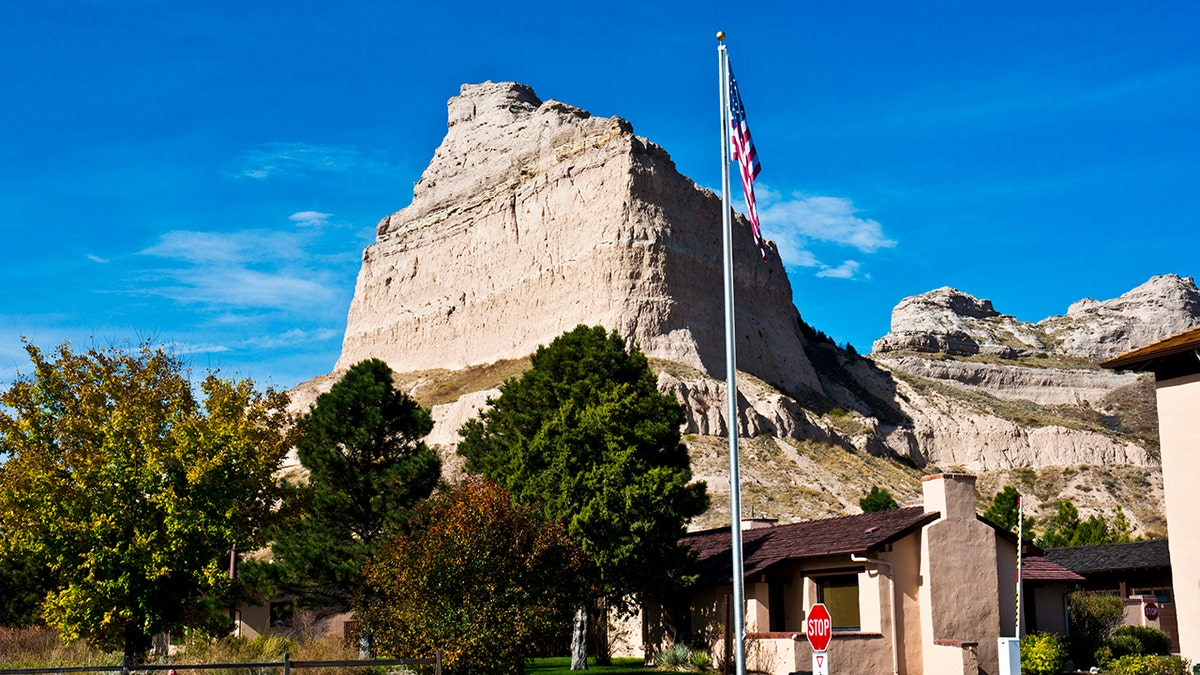
Scotts Bluff in Nebraska, including the Scotts Bluff National Monument. (Education Images/Universal Images Group via Getty Images)
There is more to Nebraska’s wide-open landscape than just cornfields. A standout among its surprises: the majestic but today largely unheralded butte where the Great Plains begin to give way to the soaring Rocky Mountains. American pioneers were certainly more aware of the weathered peaks of Scotts Bluff. Located along the North Platte River, a tributary of the Missouri, it served as a landmark for Oregon Trail pioneers and Pony Express riders. About 250,000 Americans are said to have passed by Scotts Bluff in the mid-1800s on their way to the Pacific Coast.
Nevada – Virginia City
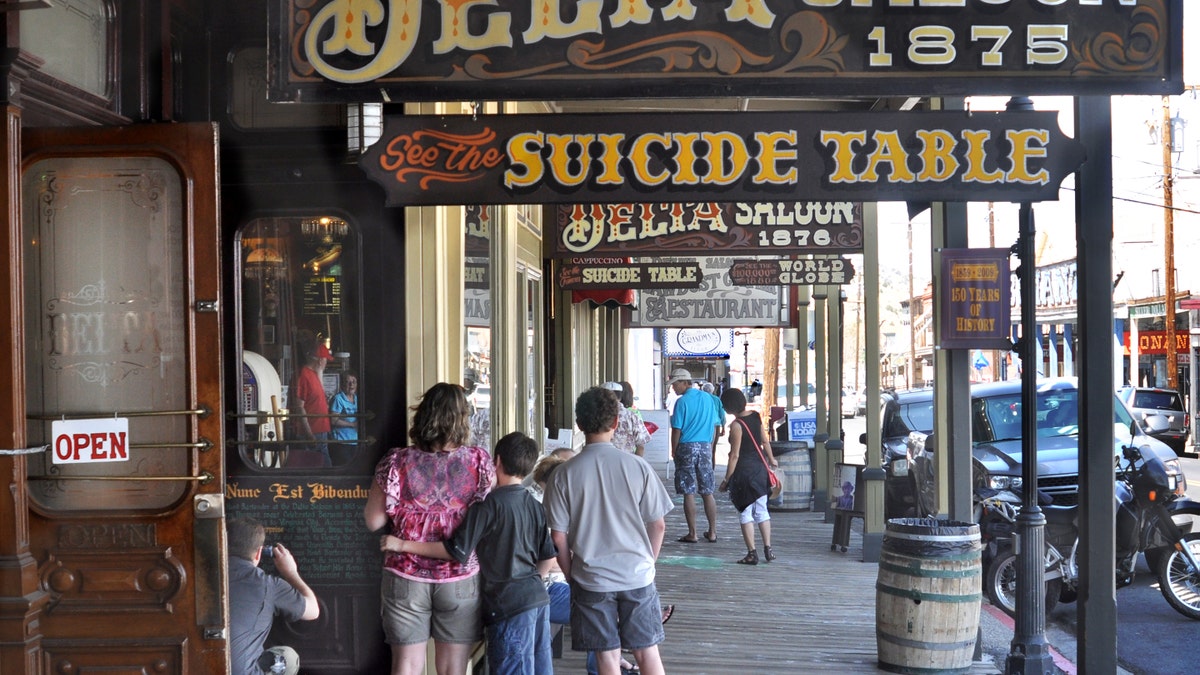
A family enjoys the attractions in Virginia City, Nevada, a gold and silver boomtown in the 1860s and 1870s. (Robert Alexander/Archive Photos/Getty Images)
Americans swarmed Virginia City with the discovery of Comstock Lode silver in 1859. The city’s population peaked at around 25,000 people within 20 years but has dwindled ever since. Just 787 people called Virginia City home in the 2020 census.
It still features many memorable tourist attractions for a glimpse into boomtown life. Among them: the Gold Hill Hotel saloon, said to be a favorite watering hole of failed miner Samuel Langhorne Clemens, who adopted his more familiar Mark Twain moniker after turning to a career as a reporter for the local newspaper. Virginia City's Old West downtown has period-style boardwalk sidewalks, while the remodeled Virginia and Truckee Railroad departs from Virginia City’s 1870 train depot.
New Hampshire – Mount Washington
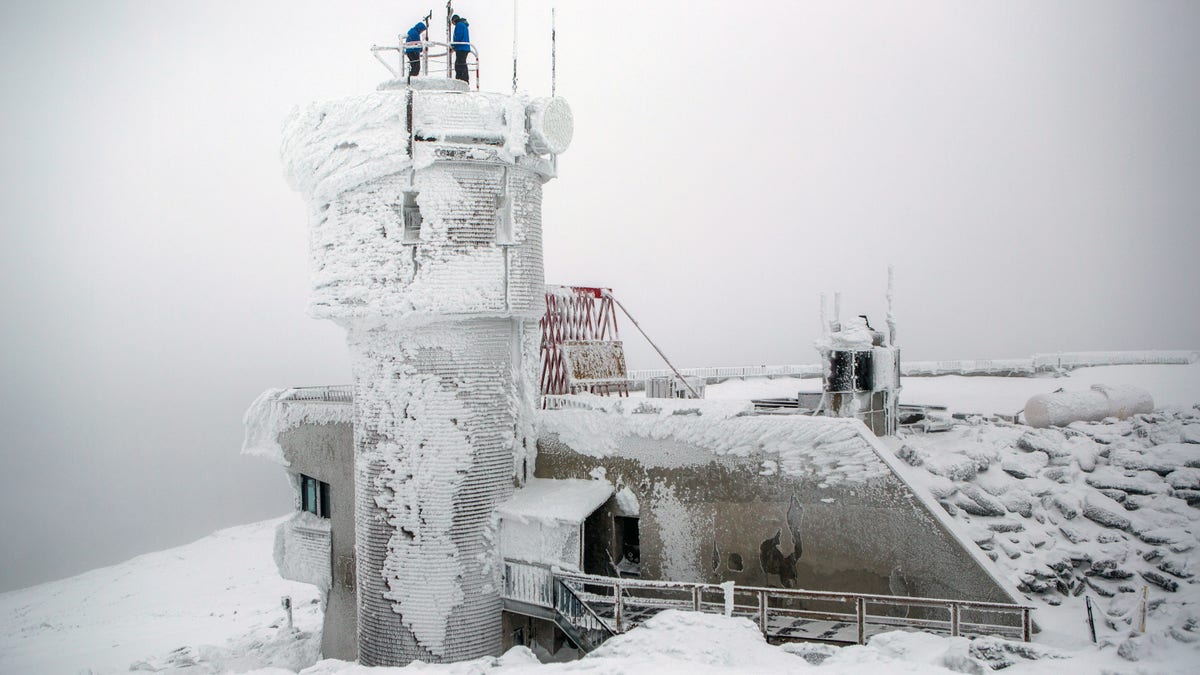
Mount Washington Observatory weather observers check on the weather instruments at the top of the observatory on the summit of Mount Washington, New Hampshire. (Photo by Aram Boghosian for The Boston Globe via Getty Images)
The centerpiece of the Presidential Range of the White Mountains is nothing less than the tallest peak in the northeast (6,288 feet). More famously, Mount Washington habitually witnesses the globe's most severe weather — due to its elevation and its location at the convergence of several major storm patterns.
Mount Washington's brutal wind and cold is proclaimed locally as a testament to the hearty nature of "Live Free or Die" state residents. The summit held the record for highest wind speed ever recorded (231 mph) for several decades and reached a record low temperate of -50 degrees Fahrenheit in January 1885. The Mount Washington Observatory recorded a wind chill of -103 degrees as recently as 2004. The mountain today is a popular attraction for tourists, who ascend the top via hiking trail, precarious auto road or popular cog railway.
New Jersey – Asbury Park Boardwalk

Fortune teller Madam Marie is among the local oddities that give the Asbury Park boardwalk in New Jersey its festive vibe. (Kerry J. Byrne/Fox News Digital)
New Jersey's boardwalks fuel a festive American carnival-like culture up and down the Garden State coast. The boardwalk in the juke-joint town of Asbury Park may be the most iconic, offering scenic ocean vistas, easy access to New York City and notable contributions to American pop culture.
Bruce Springsteen burst onto the scene with his debut album, "Greetings from Asbury Park, N.J.," helping fuel the city’s rep as a rock music haven. Today's attractions include the Silverball Retro Arcade; the Stephen Crane House, home of the author of famed Civil War novel "The Red Badge of Courage"; and celebrated music venue The Stone Pony.
The boardwalk in Asbury Park may be the most iconic, offering scenic ocean vistas and notable contributions to American pop culture.
"Did you hear the cops finally busted Madam Marie / for telling fortunes better than they do / For me this boardwalk life is through," Springsteen croons to Sandy in his 1973 hit "4th of July, Asbury Park." Yet fortune-teller Madam Marie's stall remains and New Jersey's boardwalk scene still thrives.
New Mexico – White Sands National Park
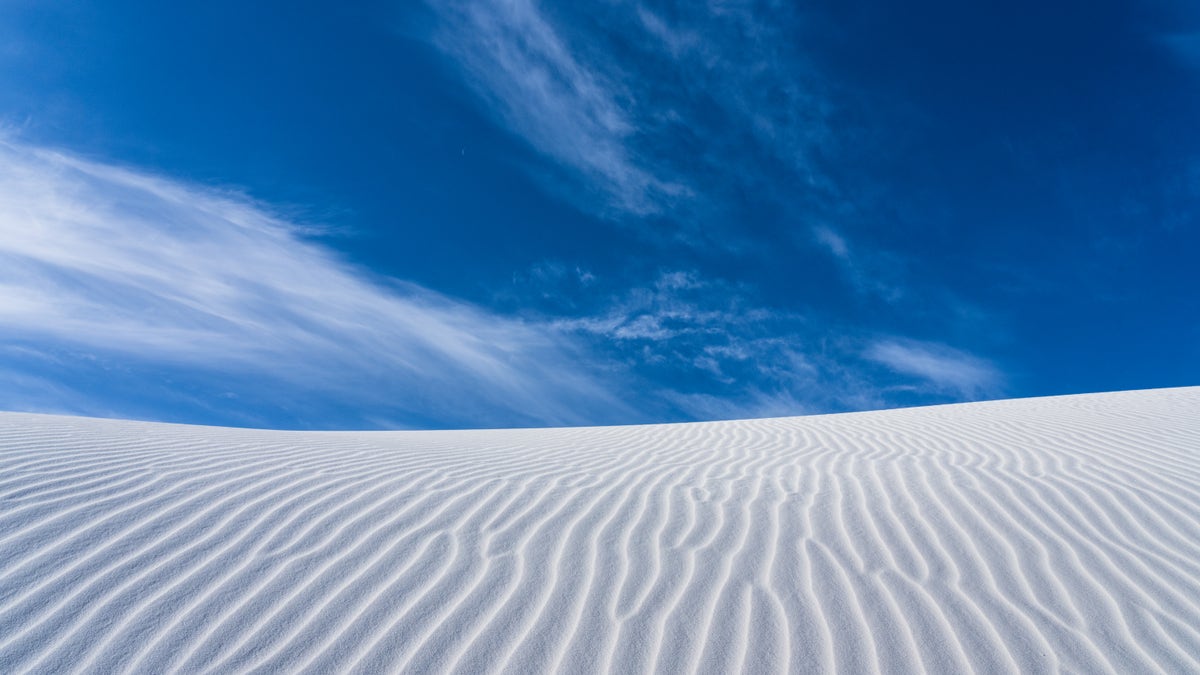
Ripple patterns and blue sky in White Sands National Park, New Mexico. (Jon G. Fuller/VWPics/Universal Images Group via Getty Images)
This geological oddity is an American wonder for its natural beauty and sobering role in the history of modern warfare. White Sands National Park includes 275 square miles of glistening gypsum sand — the largest dunefield of its kind on Earth, surrounded by the U.S. Army’s White Sands Missile Range.
The park today offers spectacular vistas and touring by automobile, hiking, biking or pack animals.
It was on this site in July 1945 that American scientists, led by J. Robert Oppenheimer, first unleashed the power of the atomic bomb, a victory of American ingenuity and industrial power amid World War II. The achievement also had lingering ramifications for mankind. The Trinity test at White Sands was a prelude to the atomic attacks the following month on Hiroshima and Nagasaki in Japan that ended World War II. The park today offers spectacular vistas and touring by automobile, hiking, biking or pack animals. It still also closes today for missile testing.
New York – Statue of Liberty/Ellis Island

The Statue of Liberty has stood as a global symbol of American ideals and immigration foundations since its dedication in 1886. (iStock)
These icons of the American experience sit on different islands a short distance apart, but are typically visited together on many tours of New York Harbor — both are considered part of Statue of Liberty National Monument. Lady Liberty has stood as a global symbol of American ideals and immigrant foundations since its dedication in 1886. The statue was often the first glimpse of the U.S. witnessed by generations of newcomers arriving at Ellis Island and the last glimpse of the U.S. seen by American troops departing for World War I and World War II.
Ellis Island offers insight into America’s immigrant culture, including the opportunity for visitors to look up the names of their relatives and the vessels that ferried them to a new life. About 12 million immigrants were processed through Ellis Island from 1892 to 1954, while about 100 million Americans can trace their roots there.
North Carolina – Outer Banks
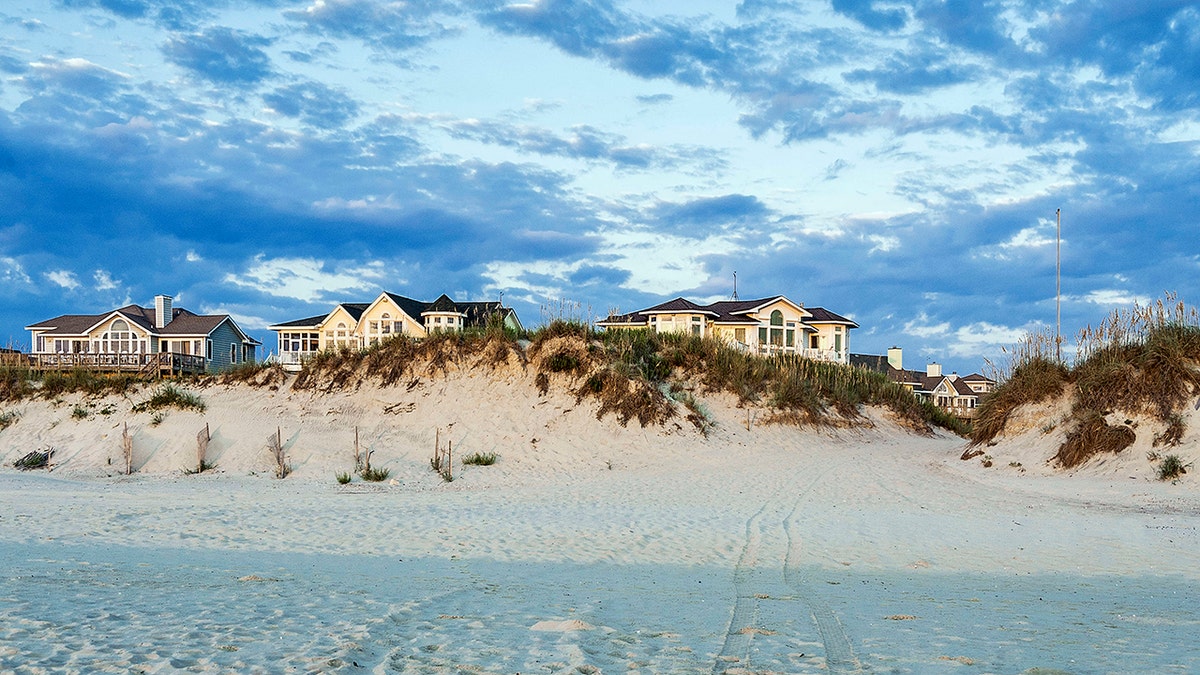
Waterfront beach houses are shown on the Outer Banks of North Carolina. (John Greim/LightRocket via Getty Images)
A 200 mile-long stretch of barrier islands that appear to skim just above the ocean, the Outer Banks loom large in both American history and in today's recreational culture. Virginia Dare was born on Roanoke Island here in 1587, the first English child of the New World; the Outer Banks’ Dare County was named in her honor on 1870. The Wright Brothers gave birth to powered flight on Kitty Hawk in 1903. The islands’ lighthouses and history of shipwrecks speak to its long nautical history.
The Outer Banks are still largely rural with idyllic beaches and wild seascapes, despite the area's popularity as a vacation and recreation destination today.
North Dakota – Theodore Roosevelt National Park
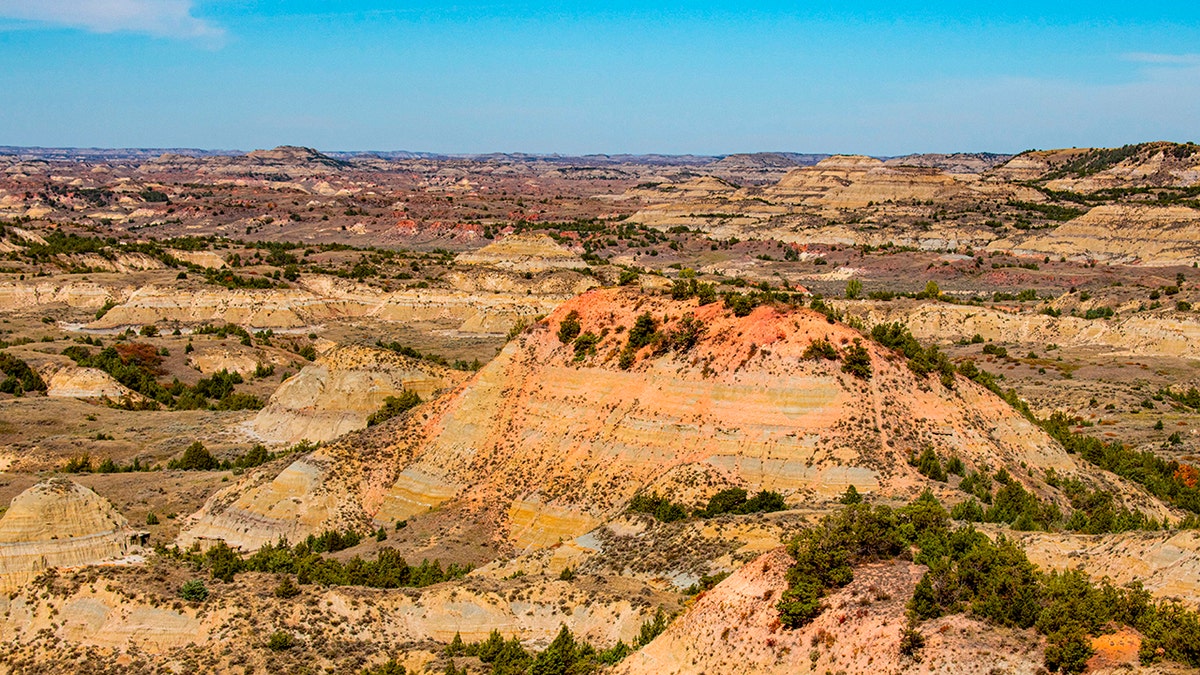
In North America, the Theodore Roosevelt National Park's Painted Canyon. (Bernard Friel/UCG/Universal Images Group via Getty Images)
The rugged and wild parkland is celebrated for its aptly named badlands, free-roaming bison and its namesake’s Elkhorn Ranch on the Little Missouri River.
The park recently had one of its busiest years ever, attracting 800,000 visitors in 2021. Stargazing is a popular activity in the isolated park hundreds of miles from the nearest major city, with weekly events and viewing parties highlighted by the annual Dakota Nights Astronomy Festival. The date of the 2022 event is still pending.
Ohio – Rock & Roll Hall of Fame
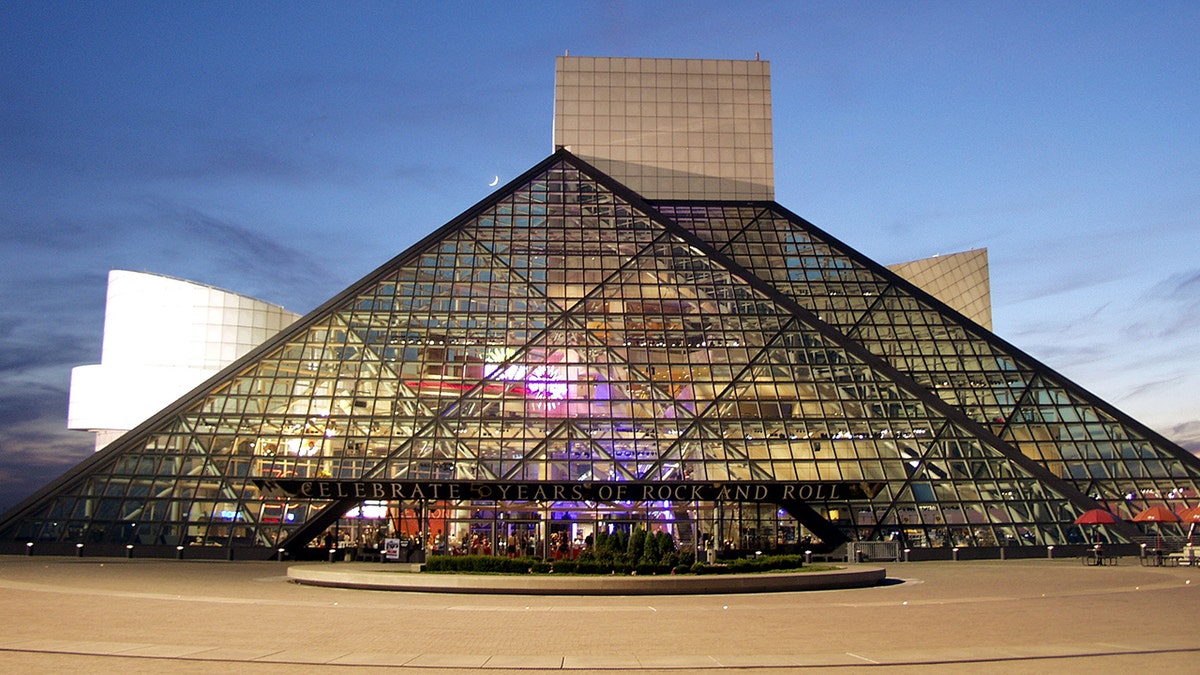
The Rock and Roll Hall of Fame at twilight at the Rock and Roll Hall of Fame and Museum in Cleveland, Ohio. ( Lesley Ann Miller/WireImage)
Perhaps no art form is more iconic-American than rock and roll — a fusion of artistic and cultural influences that conquered global pop music within a decade. The best performers of the genre are immortalized within the I.M. Pei-designed museum on the banks of Lake Erie. The Rock Hall now wraps its arms around many other genres, featuring rappers (Grandmaster Flash), country stars (Bob Wills), soul crooners (Al Green) and pre-rock-era icons (Louis Armstrong), among others.
In addition to honoring the world’s greatest performers, the museum offers exhibits and music memorabilia sure to light the fire of rock and roll fans.
Oklahoma – National Cowboy & Western Heritage Museum
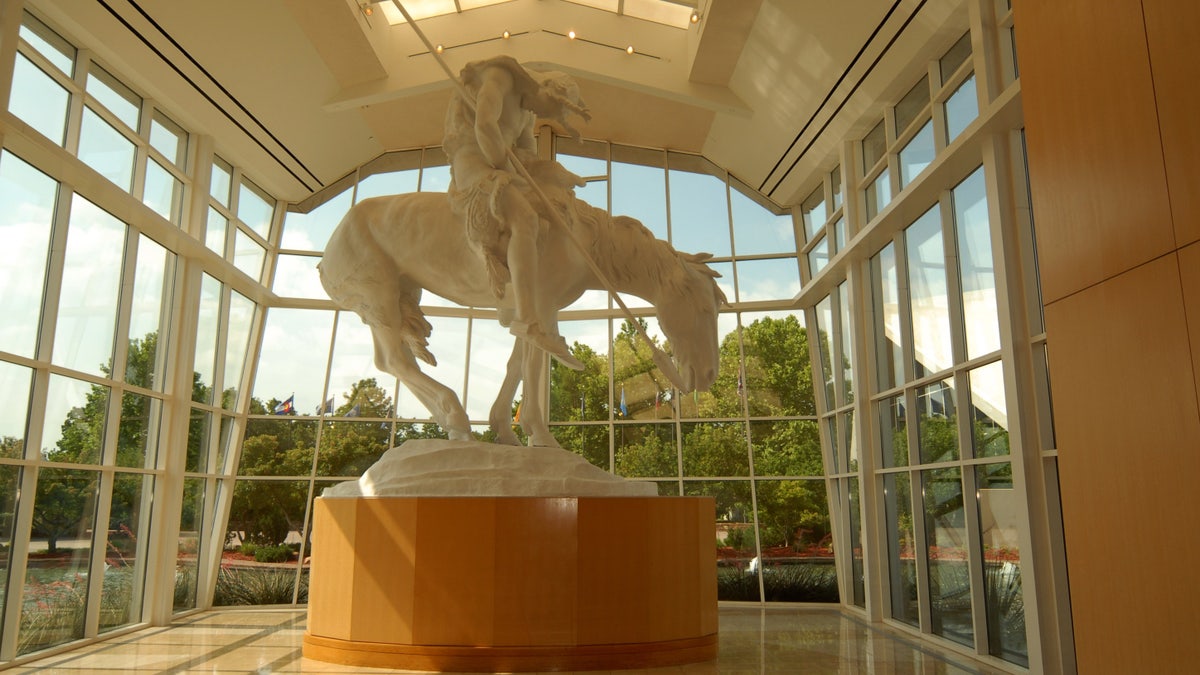
The original "The End of the Trail" by sculptor James Earl Fraser at the National Cowboy and Western Heritage Museum in Oklahoma City. The iconic 18-foot-tall monumental sculpture depicts a weary Native American warrior on horseback as he reaches the Pacific Ocean. (Photo by Peter Bischoff/Getty Images)
Cowboys still roam the west at this venerable Oklahoma City institution, dating back to 1955. It features the world’s largest collection of American rodeo memorabilia and is a grand repository of Western history, art and culture.
Current and upcoming collections include Colter’s Hell, an artistic celebration of the 150th anniversary of Yellowstone National Park, and an autumn exhibit chronicling the evolution of the cowboy hat, including those worn by Steve McQueen, Tom Selleck and John Wayne. Annual events include Rodeo Hall of Fame Weekend, the Chuck Wagon Festival and a frothy taste of Bavaria on the Great Plains dubbed OkotberWest.
Oregon – Crater Lake National Park
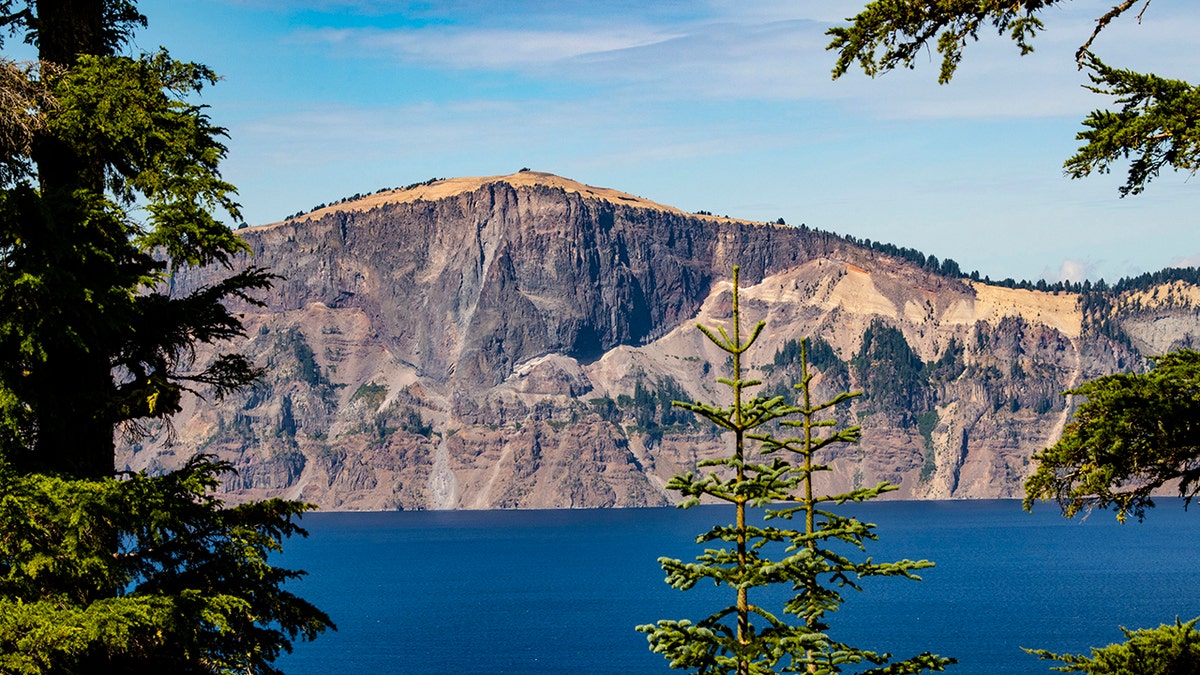
In Oregon, a view of Crater Lake National Park. (Bernard Friel/Education Images/Universal Images Group via Getty Images)
This awe-inspiring lake was formed when a volcanic eruption collapsed a formidable mountain and left a deep lake in its wake. It all took place just 7,700 years ago — a blink of an eye in geological time — so recently that Native Americans are believed to have witnessed the earth-shattering event.
"Scientists marvel at its purity," the National Park Service website notes. "Fed by rain and snow, it’s the deepest lake in the USA and one of the most pristine on Earth." Visitors today drive, bike or enjoy a trolley ride around the lake rim, explore the historic Rim Village or take guided boat tours.
Pennsylvania – Gettysburg National Military Park

Battlefield at Gettysburg, in Gettysburg, Pa., where President Abraham Lincoln delivered his famous Gettysburg Address on Nov. 19, 1863. (NPS)
The stunning human cost of preserving the nation is best seen in this sprawling battlefield in rural south-central Pennsylvania. Gettysburg pitted about 160,000 men in a pitched three-day battle that turned the tide of the Civil War in favor of the Union. Some 50,000 soldiers of both sides were killed or wounded. It remains the largest battle in North American history.
Visitors today can stand where Joshua Lawrence Chamberlain ordered the 20th Maine to fix bayonets and charge down Little Round Top to save the southern end of the Union line; or walk in the footsteps of brave Confederates slaughtered during Pickett’s charge on the decisive day of battle; or tour the vast battlefield by car, exploring the hundreds of haunting monuments that dot the landscape today.
Rhode Island – Newport Mansions
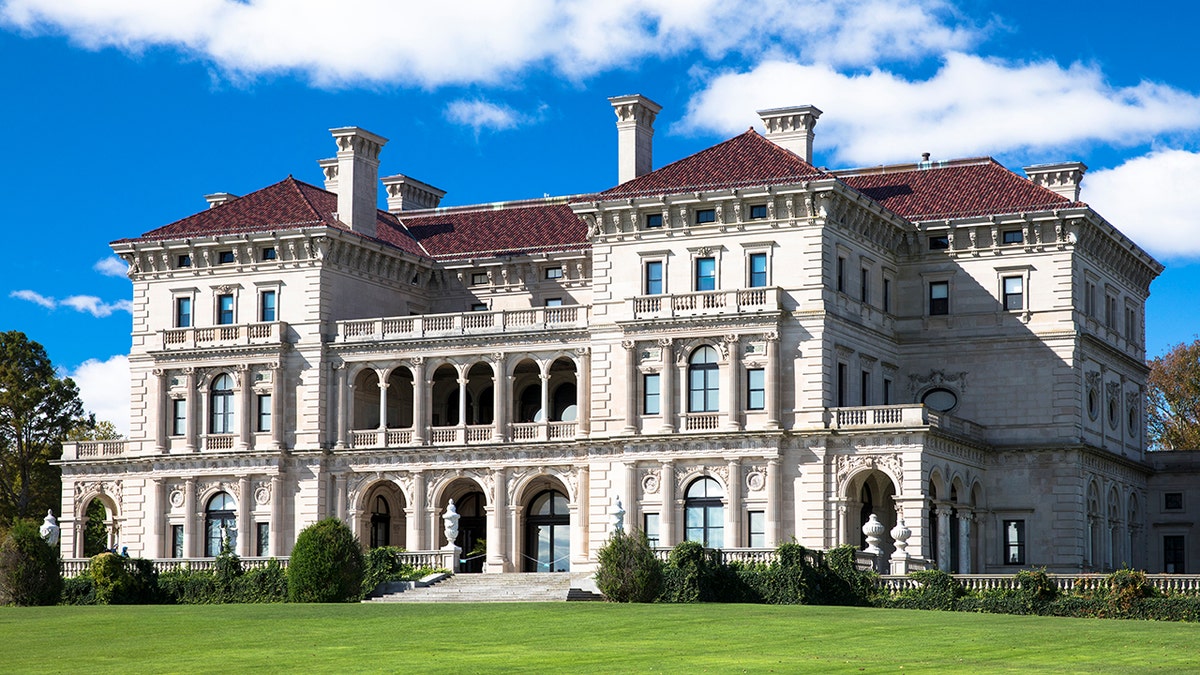
The Breakers, built 1895 as a summer estate by the Vanderbilt family, is one of the famous Newport mansions in Rhode Island. (Tim Graham/Getty Images)
The wealth of the Gilded Age springs to life in Newport, where the nation’s titans of 19th-century industry built ostentatious summer homes on the cliffs where scenic Narragansett Bay meets the Atlantic Ocean.
The Breakers, owned by railroad tycoon Cornelius Vanderbilt II, is probably the most spectacular, built of limestone in the ornate style of an Italian palazzo. Newport’s legacy as a playground of wealthy lives on today around its charming and busy New England downtown waterfront. The city is home to the International Tennis Hall of Fame and hosted the America’s Cup, the world’s premier sailing race, for decades.
South Carolina – Charleston plantations and gardens
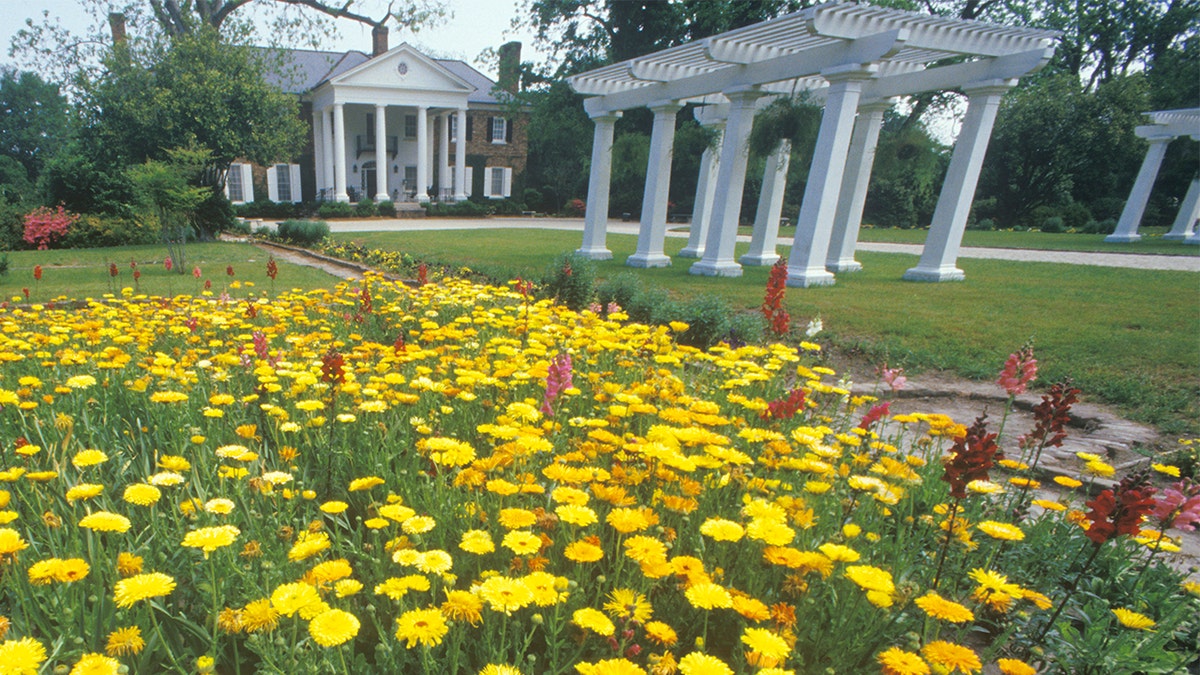
Home and gardens of the Boone Hall Plantation, Charleston, S.C. (Photo by: Joe Sohm/Visions of America/Universal Images Group via Getty Images)
The antebellum South, both its beauty and the disturbing legacy of human bondage, live on today and its vast collection of some 2,000 plantations, many of which are centered around historic Charleston and open to visitors.
Magnolia Plantation & Gardens features what it calls "America’s last large-scale Romantic-style garden," while offering 45-minute tours of its slave cabins. Middleton Place, named for Declaration of Independence signatory Arthur Middleton, claims "America’s oldest landscaped gardens" across 65 acres. Boone Hall dates back to 1681 and is famed for its Avenue of the Oaks, with its moss-covered limbs forming a photogenic canopy, along with an array of brick homes that housed slave families.
South Dakota – Mount Rushmore National Memorial
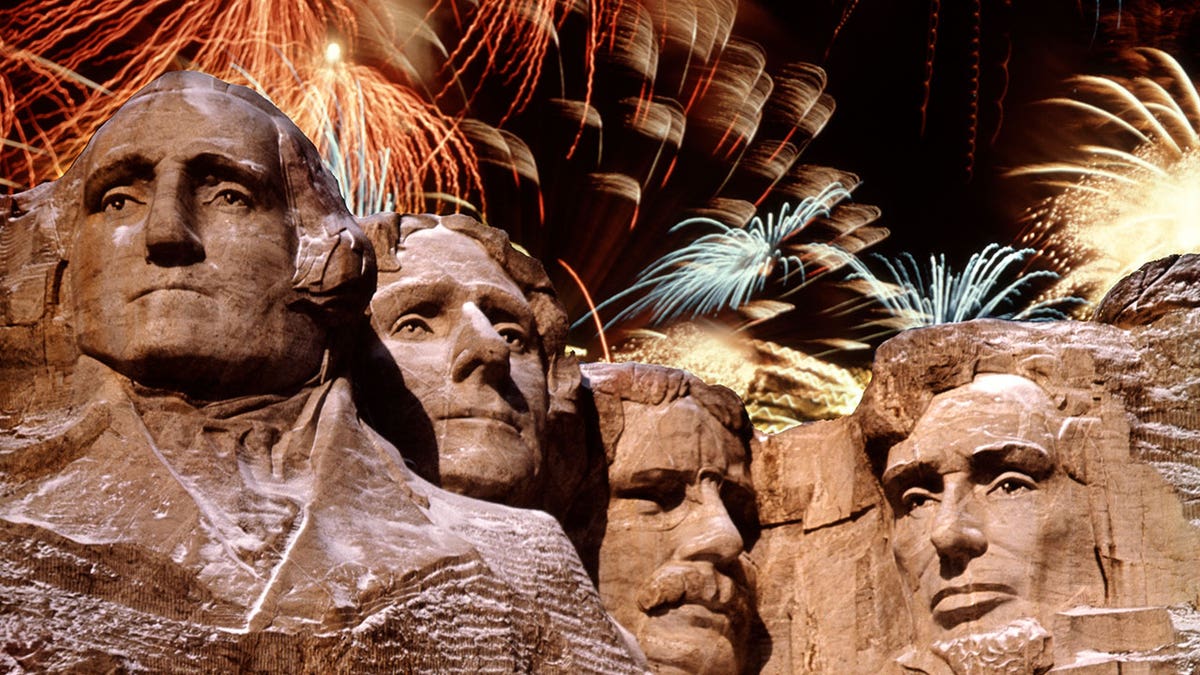
Mt. Rushmore in South Dakota, with fireworks shown in the background. (H. Armstrong Roberts/ClassicStock/Getty Images)
This monumental sculpture of four U.S. presidents, each of their faces a jaw-dropping 60-feet tall, turned a remote area of a remote state into a beloved symbol of the national narrative. Law school student William Andrew Burkett summed up the purpose of the monument in 1934, in a winning essay he submitted to a contest hosted by Mount Rushmore sculptor Gutzon Borglum.
Mount Rushmore attracts some 2 million visitors a year.
"Almighty God, from this pulpit of stone the American people render thanksgiving and praise for the new era of civilization brought forth upon this continent," Burkett wrote, his essay immortalized in bronze at the park. Mount Rushmore attracts some 2 million visitors a year and is a prominent place in the nation's cultural lexicon with its images of George Washington, Thomas Jefferson, Theodore Roosevelt and Abraham Lincoln staring stoically across the American continent.
Tennessee – Country Music Hall of Fame and Museum

Wynonna Judd, second from right, stands next to the Judds' induction plaque as sister Ashley Judd, left, Ricky Skaggs, and MC Kyle Young, CEO of the Country Music Hall of Fame and Museum, look on during the Medallion Ceremony at the Country Music Hall of Fame on May 1, 2022, in Nashville, Tenn. (Wade Payne/Invision/AP)
Nashville earned its well-deserved reputation as Music City on the strength of the country music artists who have flooded its streets seeking an outlet for their American song craft. The Country Music Hall of Fame and Museum tells the story of those journeys through its performers, sounds and memorabilia.
The most recent Hall of Fame class included steel guitarist Pete Drake, studio drummer Eddie Bayers, iconic multi-genre artist Ray Charles and mom-daughter duo The Judds.
Texas – Space Center Houston
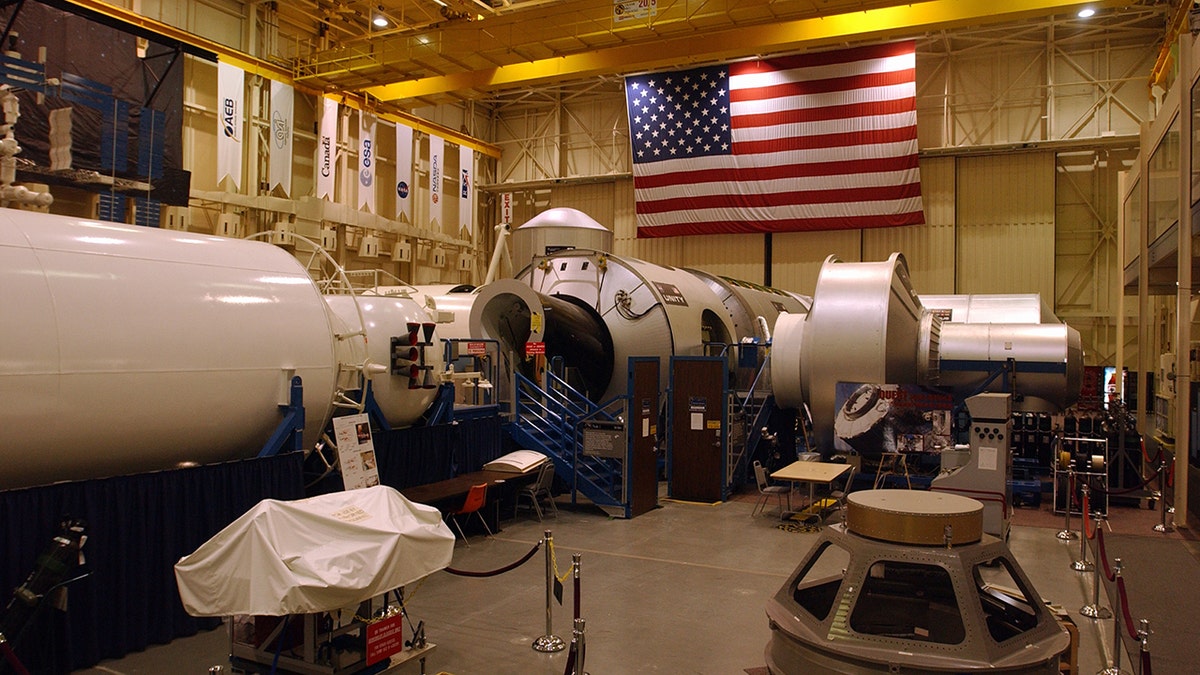
Exterior view of a mockup of the International Space Station (ISS) at the Johnson Space Center in Houston. (Robert Daemmrich Photography Inc/Corbis via Getty Images)
"Houston, we have a problem": The phrase entered the American lexicon in 1970 when astronauts aboard the Apollo 13 mission reported a potential disaster to flight control at the NASA Johnson Space Center. The more recent addition, Space Center Houston, opened in 1992. It is considered the world’s most prestigious aerospace museum and serves as the visitors’ center to the famed NASA complex. It has a spectacular collection of rocketry and artifacts.
Among the treasures: the space capsules flown and returned to Earth by the Mercury 9, Gemini 5 and Apollo 17 missions, the latter of which in 1972 carried astronauts Eugene Cernan and Harrison Schmitt, the last two men to walk on the moon. The museum also showcases a collection of moon rocks and space suits.
Utah – Monument Valley Navajo Tribal Park

Scenic Monument Valley is located on the border of Aizona and Utah at the Monument Valley Navajo Tribal Park in Monument Valley, Arizona. (Larry Hulst/Michael Ochs Archives/Getty Images)
The spectacular images of eroded sandstones buttes rising from the red rock of the Colorado Plateau, hard by the Arizona border, is firmly ingrained in America’s natural and cultural landscapes. Monument Valley was forged by tectonic forces some 250 million years ago. It was inhabited by Navajo for centuries, who set aside the land as a park within the Navajo Nation in 1958.
Its stunning landscape has reached audiences around the world as the backdrop of classic western movies such as "Stagecoach," the 1939 John Ford flick that made John Wayne a star. More recently, its jagged cathedrals of stone framed war hero and shrimp tycoon Forrest Gump, as he abruptly ended his famous silver-screen jog across America on U.S. Route 163 hear Mexican Hat, Utah.
Vermont – Lake Champlain
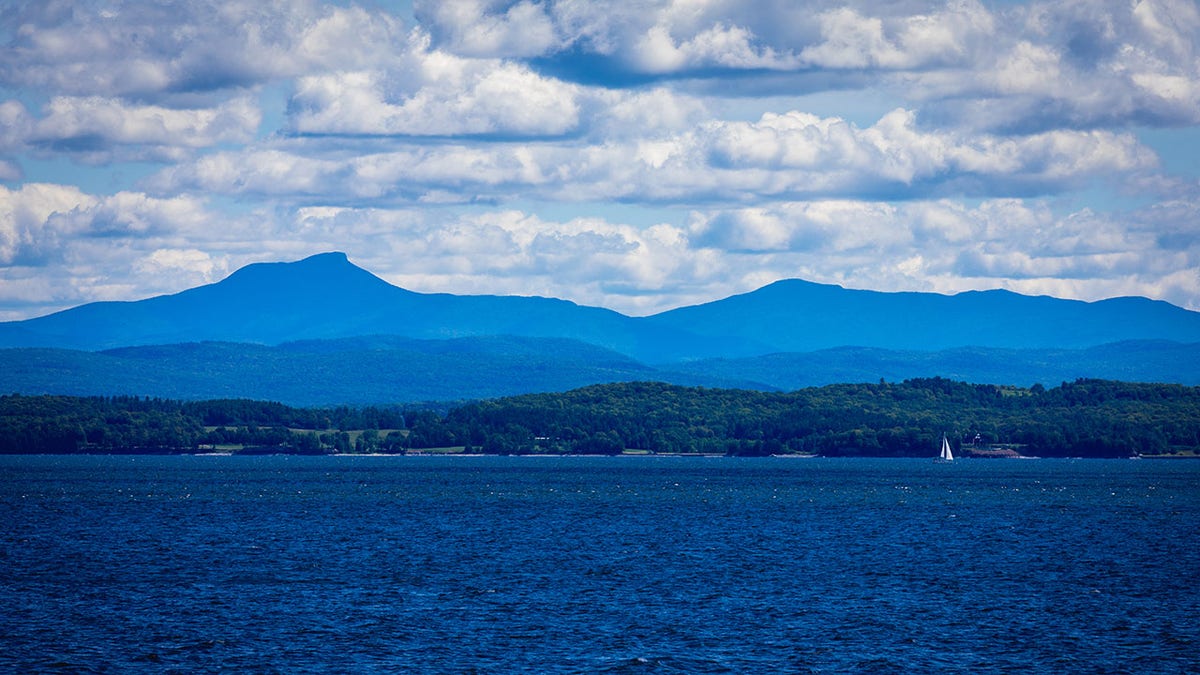
Lake Champlain has loomed large in both Native American and European American history. (iStock)
The "Sixth Great Lake" sits on the border of New York and is best explored from the quintessential New England college town of Burlington. It has loomed large in both Native and European American history. Lake Champlain divided the Mohawks to the west and Abenaki to the east, while British and continental forces fought for control of the 107 mile-long lake throughout the American Revolution.
Lake Champlain today is a perfect place enjoy the pristine wilderness and especially the autumn foliage of northern New England, or search for Champy. The mysterious Loch Ness monster-like creature was first known to the Abenaki, allegedly witnessed by French explorer Samuel de Champlain himself, and reported by dozens of other witnesses in the centuries since.
Virginia – Monticello

Thomas Jefferson's Monticello home is seen near Charlottesville, Va., in this 2014 file photo. (AP Photo/Steve Helber, File)
Thomas Jefferson’s majestic mountaintop home encapsulates the grand intellect and curiosity of the complex man who owned slaves, yet elevated the human condition with the most revolutionary phrase in history: "All men are created equal."
His words, inked into the Declaration of Independence in 1776, shattered the foundation of the power structure of tyrants who had ruled the world since the dawn of time under the belief that they were superior to their subjects. Jefferson designed the Italianate main house himself while operating what was at the time a state-of-the-art farm on the backs of slave labor. Tours today explore the architecture, archeology and agriculture of the farm, while offering insight into Jefferson the businessman, scientist, philosopher, farmer, revolutionary and third U.S. president.
Washington – Olympic National Park

View from a hiking trail on Hurricane Ridge of the Hurricane Hill Road on the Olympic Peninsula, Olympic National Park in Washington State (Wolfgang Kaehler/LightRocket via Getty Images)
This sprawling landmark, among the largest national parks, offers an awe-inspiring array of landscapes, vistas and ecosystems at the extreme northwest corner of the lower 48. Olympic National Park has a rugged and remote Pacific coastline, temperate rainforest, old-growth forests of spruce, hemlock and cedar, wildflower meadows, towering peaks, herds of elk and massive glaciers.
The Blue Glacier stretches 2.6 miles down the 7,980-foot Mount Olympus and, the National Parks Service notes, has enough frozen mass to create 20 trillion ice cubes.
West Virginia – New River Gorge National Park

From this overlook 1,400 feet above the river, one can understand why the New River Gorge is known by many as the Grand Canyon of the East. (Sky Noir Photography/Contributor/Getty Images)
America’s newest national park has long been a symbol of an Appalachian Mountain state so beautiful it's known around the world as "almost heaven." New River Gorge achieved its federal designation in December 2020. The park is celebrated most notably for its spectacular New River Gorge Bridge. It was both the world’s highest auto bridge and longest single-span arch bridge when it opened in 1977, though it has been surpassed in both global superlatives since.
CLICK HERE TO SIGN UP FOR OUR LIFESTYLE NEWSLETTER
The park offers many recreational opportunities, along with insight and exhibits exploring West Virginia’s coal mining history and culture. Among the figures celebrated: coal miner and son of slaves Carter Woodson, who recorded the stories he heard digging ore and turned them into a published legacy as the "Father of Black History."
Wisconsin – Lambeau Field
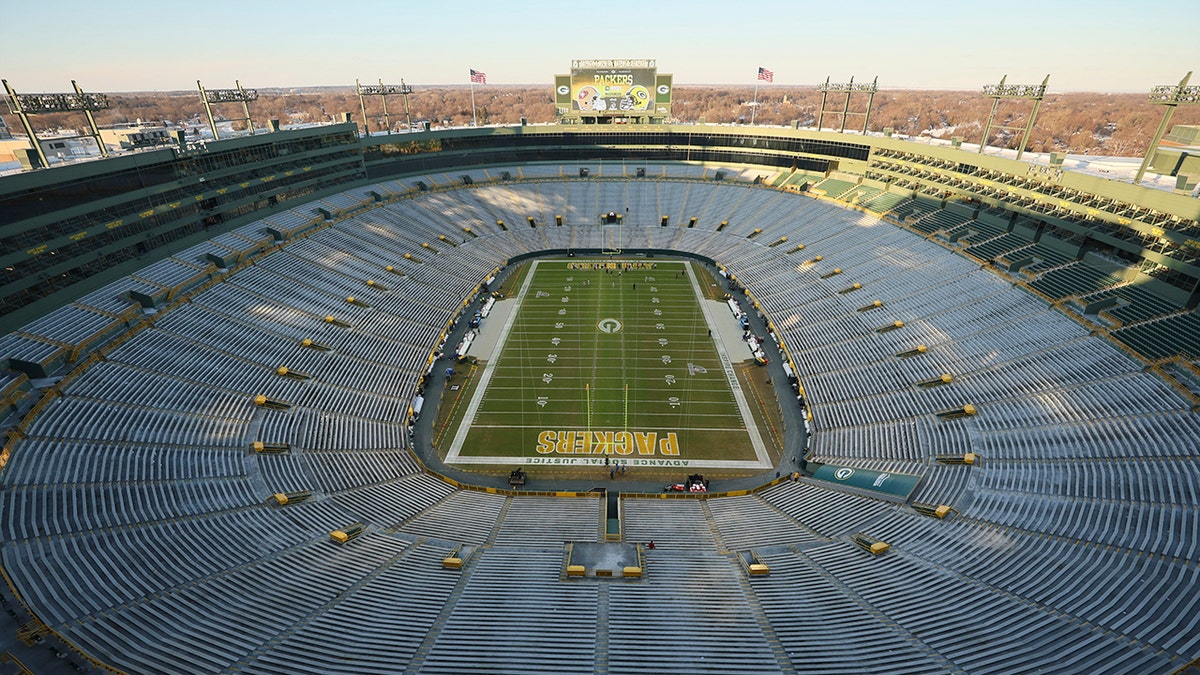
An overall view of Lambeau Field before a Green Bay Packers vs. San Francisco 49ers game, in Green Bay, Wisconsin. (Jeff Haynes/Sports Illustrated via Getty Images )
Baseball may be the national pastime, but football is America's national passion — as witnessed each autumn at Lambeau Field. The home of the record 13-time NFL champion Green Bay Packers is one of the great temples of the sport, heralded even by fans of opposing teams as a great place to celebrate the game.
The arena is named for Wisconsin native Earl "Curly" Lambeau — legendary player, coach and founder of the Packers. Games here have been sold out every year since 1960, the famously frigid weather of the Upper Midwest appearing to only embolden Green Bay fans.
FOLLOW US ON FACEBOOK FOR MORE LIFESTYLE NEWS
You don’t need a hard-to-score game-day ducat to worship at this pigskin palace. Tours are offered to the public throughout the year, even on the 4th of July. The culture of Wisconsin is proudly on display at Lambeau, from tailgaters' bratwurst to the team's many distinctions as a locally treasured symbol of the working-class American heartland. Green Bay is the smallest city in America with a major professional sport franchise, while the Packers are the only community-owned pro sports team, a nonprofit company with more than 360,000 fans as shareholders.
Wyoming – Yellowstone National Park

Yellowstone is famed for its abundant wildlife, stunning natural scenery and geysers such as Old Faithful. (Jen Golotko/Fox News Digital)
Yellowstone celebrates its 150th birthday this year as America’s, and the world’s, first national park. It’s famed for its abundant wildlife, spectacular natural scenery and geysers such as Old Faithful, which belie the turbulent and unpredictable volcanic world beneath the pristine wilderness.
"The park is full of exciting wonders. The wildest geysers in the world … beautiful and awful, their basins arrayed in gorgeous colors like gigantic flowers," Sierra Club founder John Muir gushed poetically about Yellowstone in 1898.
CLICK HERE TO GET THE FOX NEWS APP
Yellowstone is impossibly beautiful, untamed, the first of its kind, with a dramatic past and unknown future — much like America itself.




















